


























Atlantic City, N.J. – DJs, mark your calendars because DJX ’24 is on the horizon.
Set for August 5-8 at the Hard Rock Hotel & Casino Atlantic City, N.J., DJX will bring the entire DJ industry together with its winning combo of new technologies, education, and sponsored After Dark events.
Produced by DJ LIFE magazine and Media Group, DJX will present a showfloor full of the latest DJ-related products (audio, lighting, studio, content-creation, accessories, etc.), a slate of 30 seminars, panels, and keynotes tack ling the most-vital topics, and nightly parties featuring top DJ talent. Operating since 1990, DJX is the longest-running and most-impactful trade show/event in the North American DJ industry. Whether you’re a mobile jock, club DJ, bedroom spinner or home-studio music maker, DJX ’24 will have something for you.
After Dark Parties: On Aug. 5, DJX’s opening-night event at HQ2 Nightclub in the Ocean Casino Resort will kick off with a bang with Gimme Gimme Disco, the everpopular, dance-party brand spinning classic disco, retrofunk and bumpin’ R&B. Featuring New York-based DJs Holly T (please see Page 26) and CBJtheDream (Please see our previous issue), this party is sure to please.
On Aug. 7, “Millennium Mixtape,” Wednesday night’s mobile-centric party co-hosted at the Hard Rock’s DAER Nightclub by Jake Jacobsen and Mike Alevras, will feature jams from 1990 to 2010. With DJ Kid Kasper on the decks, the event will also feature performances from H.B. Monte from “America’s Got Talent,” Chicago’s DJ LG, and Pittsburgh’s Digital Dave Lander. (More After Dark events to be an nounced.)
Keynoters: On Aug. 6, the popular DJ/producer duo Disco Fries will participate in DJX’s popular “Keynote Q&A” se ries. After meeting at Boston’s prestigious Berklee College of Music in 2004, Nick Ditri and Danny Boselovic have been cranking out remixes, original productions and star-studded collaborations that have lit up clubland. In addition to other entrepreneurial pursuits, they introduced “Finish My Track,” an innovative online production service.



They attended their first DJX in 2008 and now they’ll be returning to AC to give back to the DJ community and inspire those looking to move on up in the industry. In an intimate Q&A session with DJ LIFE Editor Jim Tremayne, the duo will tell their tale and answer any and all questions, whether it’s about production, DJing, new technologies or business matters.
Seminars: Ryan von Ahn of By Request DJs in Akron, Ohio, will present “The Gig MacGyver: Predicting & Preparing for Disaster (Before It Actually Happens).” In this detailed tutorial, von Ahn will reveal methods to mitigate risk, using both real-life examples and hypotheticals. He’ll also exchange war stories and have an interactive discussion, asking, “What would you do?” Check in and avoid the next gig disaster.
Longtime contributor Mike Walter of Elite Entertainment in Tinton Falls, N.J., will present “You… Amplified” and show
H.B.
how mobile jocks can take your MCing to another level by improving wedding-party introductions and audience interactions. In this instructive seminar, Walter will demonstrate tried-and-true techniques and offer solid suggestions to upgrade your microphone work and polish your presentation.
For the latest on DJX ’24, please visit www.djxshow.com.
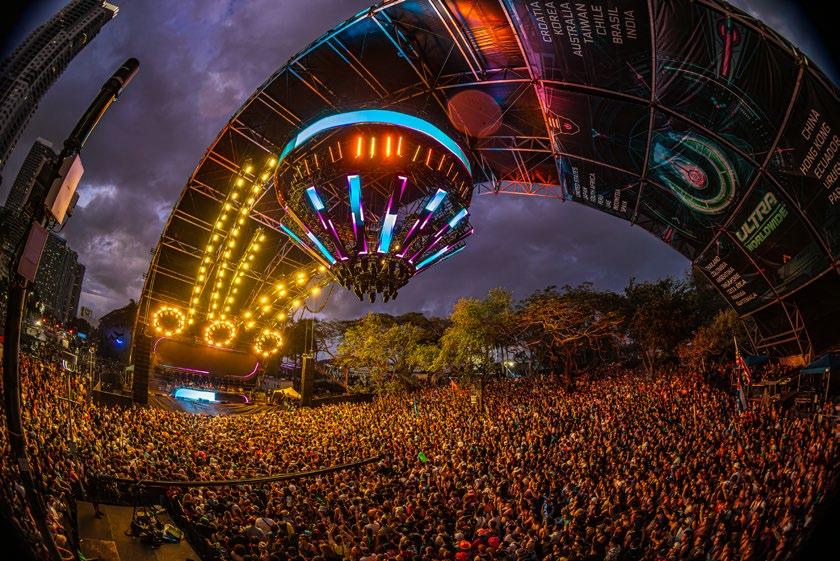
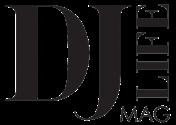



Images from America’s Biggest Electronic-Music Playground
DJ Holly T Lights Up “The Drew Barrymore
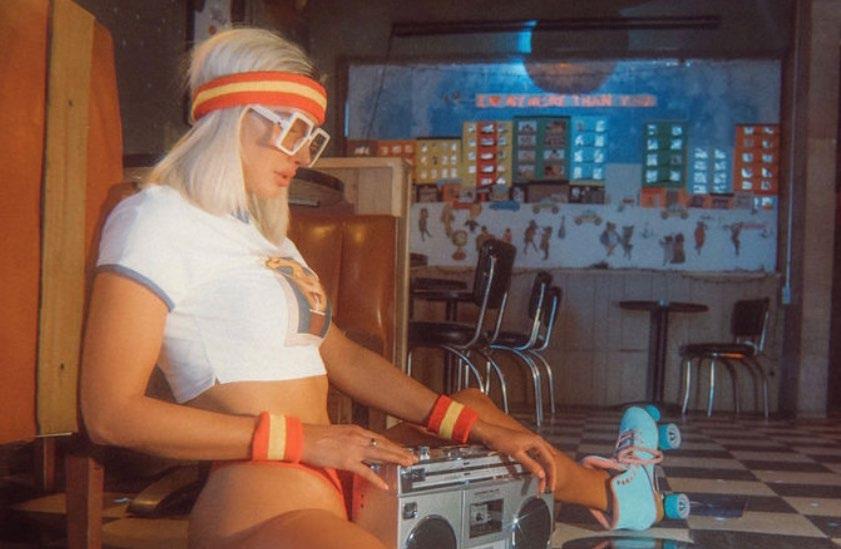

 By Mark Mancino
By Mark Mancino
This month’s cover subject is Alison Wonderland and, as you’ll read in Mark Mancino’s chat with her, she’s come a long way from her days as a promising cellist in her native Australia. Though she’s had some emotional bumps along the way, she’s currently one of EDM’s top DJ/producers and, now a mother, she’s found a new level of contentment. We hope you enjoy our candid conversation with her.
As you’ll see in the coming pages, much of this issue is devoted to Miami Music Week, which ran this past March 18-24. With events in a variety of area venues, Miami Music Week featured club parties, rooftop soirees, and one-off/pop-up events – like the EDMAwards, for which DJ LIFE served as media sponsor. And, as always, it culminated with Ultra Music Fest, which featured the globe’s biggest DJs. You can see all the MMW highlights on Pgs. 22-25, plus the best of Ultra in Festival Spotlight on Pgs. 34-37.
In a feature interview, we visit with Holly T, the daily DJ of television’s “Drew Barrymore Show,” who explains the ins and out of working a syndicated TV show that’s seen by more than a million viewers a pop. In our Sound Bites department, we visit with a pair of rather different DJ/producers. From the world of bass music, we connect with Jauz (aka Sam Vogel), whose ethereal, new single, “Teardrops,” features less boom and more melody. We also go In the Studio with German techno titan Boris Brejcha, whose new album, Level One , is one of the more bracing musical rides you’ll take in a while.
As he often does, Wesley King handles this month’s product-review section. In Playback, he re-visits the Native Instruments DJ brand and checks out its latest controller, the Traktor X1 MK3. For Studio Session, he gets acquainted with Ableton Live 12, the legendary DAW’s latest update.
There’s plenty of content for mobile jocks in this issue. In Mobile DJ Profile, we connect with Carolina DJ Professionals’ Troy Adams, who explains how he runs three offices in two states and how education informs the success of his business. In DJ Business, Jordan St. Jacques offers a variety of remedies for DJ companies having email deliverability issues. And in a feature story, Jordan explains what’s in a website theme and how it’s now more important than ever for DJ-company sites.
Of course, we’re getting close to DJX, so this issue details some of the latest info on the industry-leading show. Set for Aug. 8-11 at the Hard Rock Hotel & Casino in Atlantic City, N.J., DJX will include 30-plus seminars, panels and keynotes, an exhibit-hall full of the latest DJ-related technologies, and sponsored After Dark events. For the very latest on DJX, please visit www.djxshow.com. We hope to see you there.
Cheers,
Jim Tremayne Editor, DJ LIFE
editor-in-chief
Jim Tremayne jtremayne@hazanmediagroup.com
editor-at-large Brian O’Connor boconnor@@hazanmediagroup.com
web editor and social media manager Mark Mancino mmancino@@hazanmediagroup.com
contributors
Wesley King, Chris Caruso, Amanda Chavez, Shawn Christopher, Paul Dailey, Reed Dailey, Chris Davis, DJ Deets, Tony Fernandez, Tommy D Funk, Lexi Ferguson. Ryan Hayes, Greg Hollmann, Erik Miller, Lily Moayeri, Jordan St Jacques, Jeff Stiles, Ashley Teffer, Danny Turner, Phil Turnipseed, Joshua Volpe, Travis Wackerly, Curtis Zack
chart coordinator Dan Miller dmiller@hazanmediagroup.com
director of sales Josh Kerman jkerman@hazanmediagroup.com
creative director Janice Pupelis jpupelis@hazanmediagroup.com
director of technologies and project management Steve Thorakos sthorakos@hazanmediagroup.com
Chairperson & COO/Co-Publisher Robin Hazan rhazan@hazanmediagroup.com
President & CEO/Co-Publisher Shawn Hazan shazan@hazanmediagroup.com


visit our website: www.djlifemag.com 516.767.2505
Editorial and Sales Office: DJ Life, Oyster Bay, NY 11771. (516) 767-2505 • (Sales/all other business): (516) 767-2505 • djlife@hazanmediagroup.com.
Editorial contributions should be addressed to The Editor, DJ Life Mag, Oyster Bay, NY 11771 or sent to JTremayne@hazanmediagroup.com.
DJ Life Mag is published bi-monthly starting with the second month annually.
Design and Contents: copyright © 2024 by DJ Life Mag and must not be reproduced in any manner except by permission of the publisher.
Web: DJLifeMag.com DJXShow.com and HazanMediaGroup.com
Subscriptions: Complimentary Digital Edition. Email: djlifemag@hazanmediagroup.com Phone: 516-767-2505 ext. 502 Web: djlifemag.com/subscribe
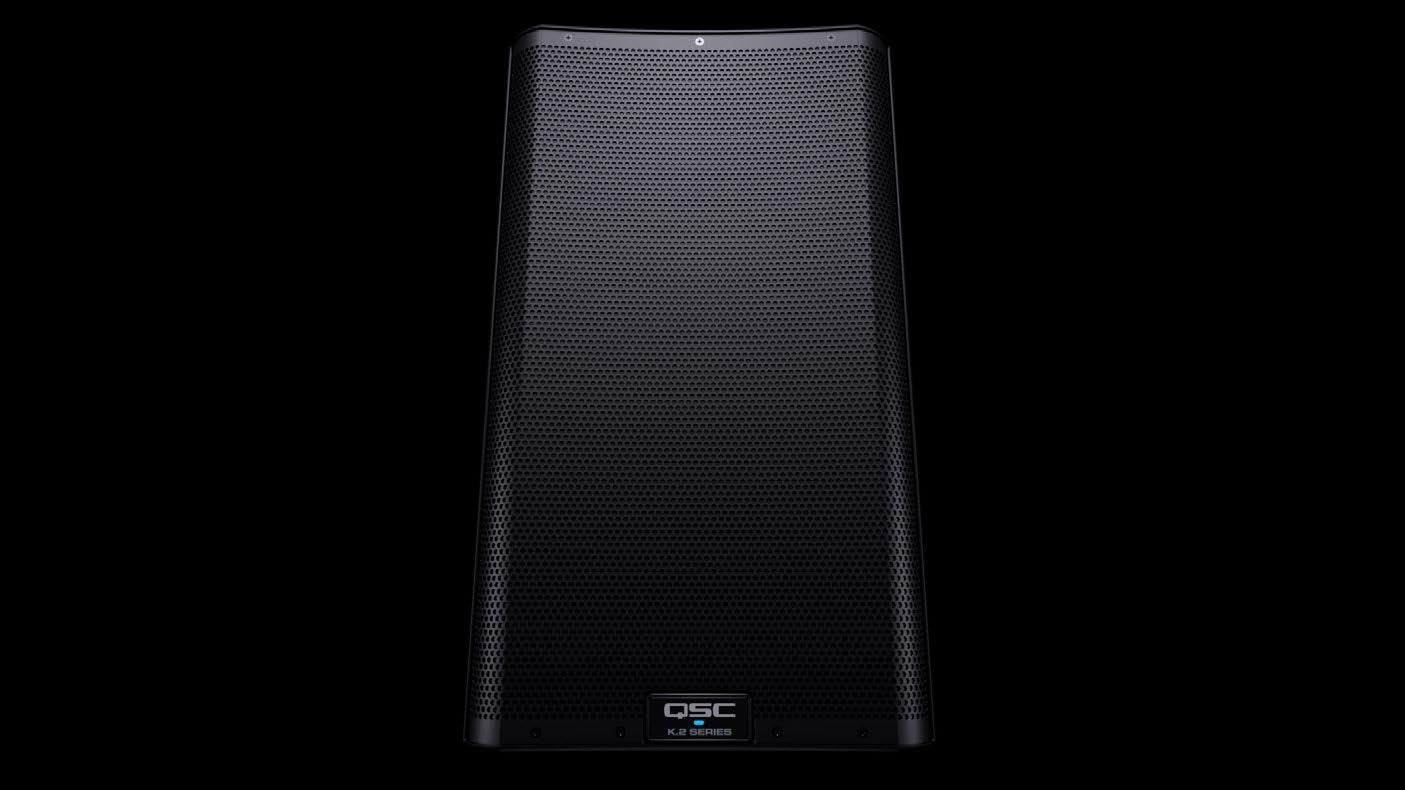
Even after a decade since their introduction, the K Family of loudspeakers, subwoofers and line arrays continues to be the standard for performance, quality, reliability and real, lasting value. With well over a million sold (and counting), it’s the world’s most beloved loudspeaker line.

Atlantic City, N.J. – DJX ’24 is set for Aug. 5-8 at the Hard Rock Hotel & Casino. Produced by DJ LIFE magazine and Hazan Media Group, DJX will present: the DJ industry’s largest exhibit hall featuring the latest industry technologies and accessories; 30-plus seminar, panel and keynote sessions tackling the hottest industry topics and presenting inspirational ideas; and sponsored evening events featuring top DJ talent. On the seminar/panel/keynote front, DJX will present sessions appropriate to the mobile, club and studio portions of the market and will discuss tech, business and general inspiration. At press time, new sessions: include:
“DJing Outside the Box.” Darrin “B-SIDE” Young of DAS Audio is not your average sales guy, and in fact at this unique seminar, he won’t be selling at all. Instead, he’ll be offering a well-informed look into the past, present, and future of the DJ market. As an industry vet who has won several awards for his patented audio designs and consultations on some of the most revolutionary concepts, he’s uniquely qualified to
discuss the very evolution of our market’s technologies, and he will with this hands-on workshop and demo. See how wireless technology like Phase DJ, DAS Control, and software by Crate Hackers and VIBO, for example, are changing the game and how Serato Stems can be useful, even if you’re not a remix DJ. Learn how to make your old hardware new again. Session to include giveaways.
Jordan St. Jacques of Canada’s Digitera, best-known for his digital marketing abilities and web solutions, will present a trio of sessions:
“Update Your Profile: AI Content with Advanced Image & Video Creation.”
St. Jacques expands on his AI talks with a hands-on demonstration on how to create and use both images and videos within your DJ company’s website and social-media workflow. Make AI work for you.
“Website Diagnostics: How to Spot & Fix Problems.” With the severe lack of time that DJs have in their workweek,
it’s always great to discover new tools that can help spot your company’s website problems and fix them quickly. Known for his extreme productivity in discovering and using advanced digital tools, St. Jacques explains how to get a notification right in your inbox as to when there’s an issue with your website, and how to fix it.
“ SEO Case Studies for Mobile DJ Companies.” As we all know, the amount of bookings that a DJ obtains can be affected dramatically by where the DJ’s website ranks on Google. With The Knot/Wedding Wire dominating Page 1 for most of the desired national and local keywords, it’s quite difficult to outrank them... and expensive, if you hire a professional. However, it’s not impossible. Join St. Jacques alongside mobile vet Lou Paris for an “SEO Case Study Session” where they peel back the layers on a few DJ companies which have succeeded in obtaining an organic Page 1 ranking on Google.
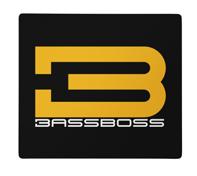



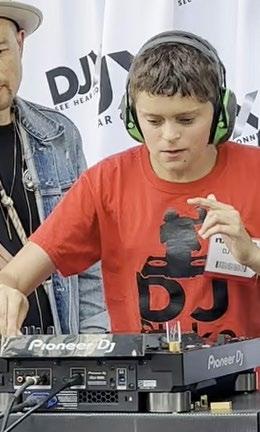
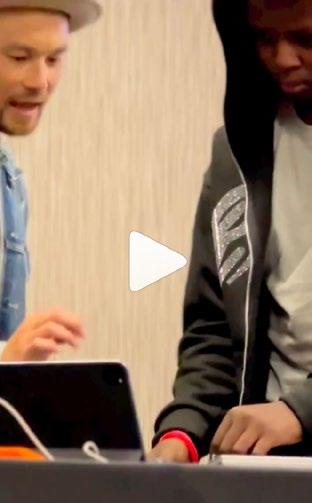

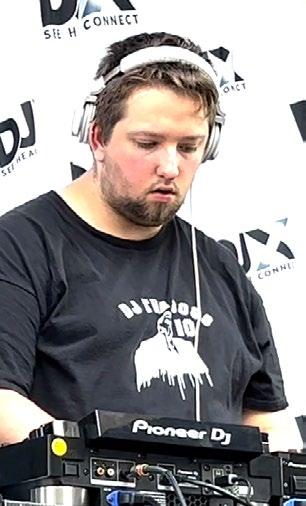





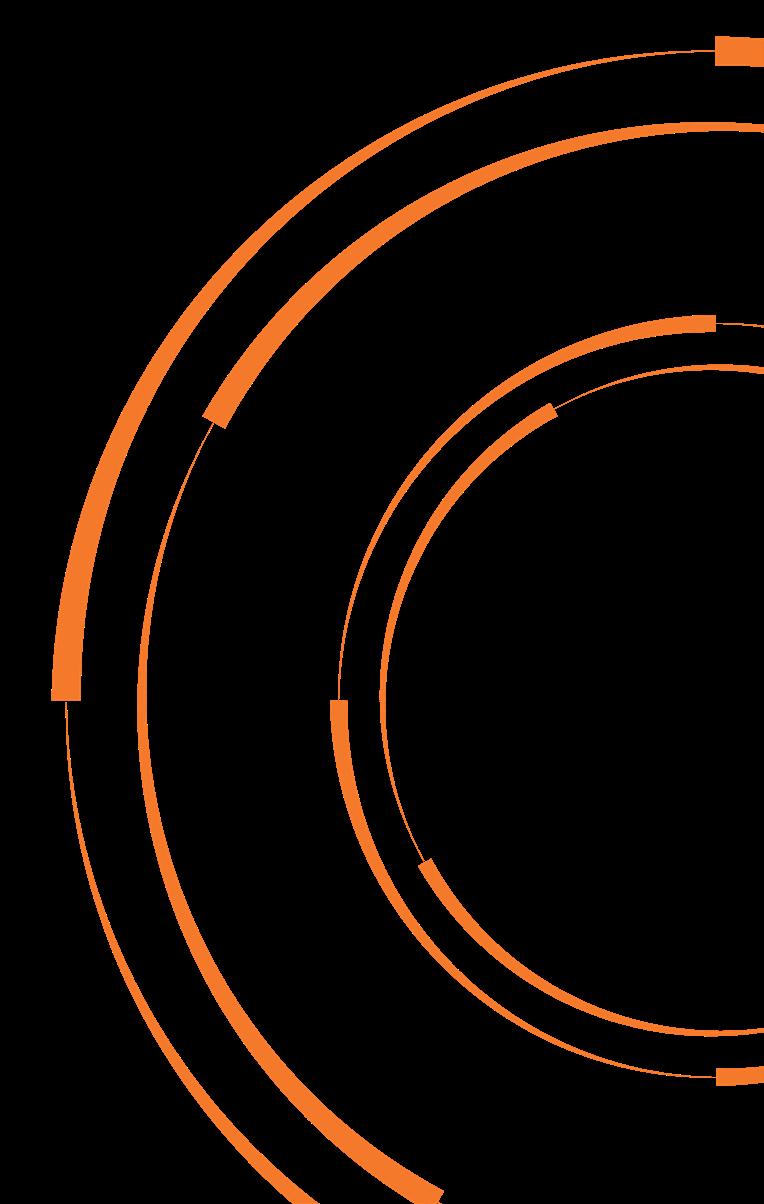



During his near-decade in the electronic-music spotlight, Jauz has rightly been lauded as one of genre’s unique young talents. Known for his original sound designs, gut-busting bass beats, and rampaging sets at some of North America’s top festivals and clubs, Jauz has won over fans with a flurry of original tracks, collabs and remixes.
Another successful grad of the L.A.-based ICON Collective Music Production School, Jauz – aka Sam Vogel, 30 – broke out big in 2014 with the bass-house anthem, “Feel the Volume.” He then followed up with remixes like his groovy 2016 collab with Diplo on MØ’s “Final Song” and his spooky 2019 take on SHAED’s “Trampoline,” plus original tracks like 2022’s manic “Mercy” (with Masked Wolf) and 2023’s housey “Lights Go Out.” Though he’s always displayed a versatility with genres, his boombastic live sets of bass/dubstep-heavy material became his trademark.
In 2024, Jauz is set to flip the script a bit. In the wake of “Teardrops,” his new ethereal, breakbeat single released on his Bite This! imprint, he’s embarking on a novel tour. The Wise Vs. Wicked 2024 Tour will play 12 shows in seven North American towns, and most cities will include two dates – one house-leaning “Wise” show and one bass-leaning “Wicked” show. We caught up with Jauz pre-tour to discuss it all.
DJ LIFE: The new single “Teardrops” seems to represent your further evolution as a DJ/producer. For some fans, it’s bit of a departure from the huge, crunchy bass vibes you’ve become known for. What was your approach to this tune?
Jauz: I’ve always had a ton of influence from garage/ UKG and breakbeat ever since the inception of the Jauz project. And if you look back at a lot of my earliest records, that influence is way more present than in the records most people might know or remember of mine. So, while it might feel different or new comparatively, to me it feels like something I’ve always had an affinity towards making and it felt great to revisit.
DJ LIFE: For you, are there more melodic and perhaps more artistic possibilities with progressive sounds?
Jauz: I think it’s just a natural evolution for myself. The mantra of Jauz has always been “Music Has No Boundaries,” so I was always going to keep pushing myself to different areas of music, whether it be more melodic, more heavy, etc. I also won’t lie – I think the older I get, the more I gravitate towards writing music with more “substance,” whether that be melodics, vocals, and so on. But at the same time, I just put out an album of all heavy-ass dubstep and drum-n-bass records, and I’ll always bounce between making stuff that’s aggressive, melodic, for the club, for festivals, for your headphones. That’s how I’ve always been and always will be.
DJ LIFE: For your tour, you’re offering fans both sides of your artistic approaches. What was the thinking there? And what should fans expect when you’re mixing the two sounds on some dates?
Jauz: There are a few dates – New York, for example – where I’ll be doing two sets in one night. But the goal
with the tour is that each show is completely separate from one another – different songs, different visuals, different vibes. I just got back from the first weekend in Philadelphia and a lot of kids after the second show came up and said they had been to both nights, and how cool it was to see two totally different shows in the same room by the same artist. That reaction is exactly my goal.
DJ LIFE: Can’t beat that…
Jauz: I’ve always had these two polarizing sides to my sound, on top of everything that lives in the middle. So it’s been really fulfilling to finally give them each their proper space to live in. And after this, we, of course, will have tons of “real Jauz” shows lined up where you’ll get a completely different experience to either of these two, as well.
DJ LIFE: Talk about your relationship with your fans. Back in 2018, you were voted Amercia’s Best DJ and garnered massive fan support. How do you stay connected with your fans? How do they motivate you?
Jauz: The fans are the only reason I have a job, why I’m able to do what I love most for a living, why I’m able to put a roof over my daughter’s head. They don’t owe me anything, so the fact that after all this time they still come to shows, stream the music, buy the merch, etc., is really just mind-blowing to me. Obviously as I’ve gotten older, things have changed a bit. For example, I don’t always have time to stay behind after a show and take 150 pictures because I’m almost always taking the first flight in the morning back home. That said, I still try to do just about everything I can to make sure that the fans know how much I appreciate them, just like I always have.
DJ LIFE: What’s your production process? Do you have a ritual? Or is it something that happens when the inspiration hits?
Jauz: I’ve never really had a routine or a ritual. I just go into the studio every day and try to have fun, and hopefully something productive comes out of it. I’m a pretty firm believer in letting creativity flow out of you, as opposed to trying to “harness” it. So, having some sort of regimen, to me, would feel a bit counter-intuitive.
DJ LIFE: What’s in your studio? What’s your DAW? Monitors? Do you have fave plug-ins?
Jauz: My studio is a bit of an oxymoron. I have tons of gear, equipment, etc., but 90-percent of the time it’s just me tapping away on my laptop like I’ve done since I was 14. I’ve been producing on Ableton Live for the last 13 years straight. It feels like it’s as much a part of me as my arms and legs are. Currently, I’m using the Genelec 8351A monitors, which I love because of their SAM smartmonitoring hardware that allows me to correct any frequency issues in my studio and get as true of a reference as I possibly can. My main go-to plug-ins are [Xfer Records] Serum, all the Native Instruments plug-ins, the FabFilter Suite, Cableguys products, and a ton of Arturia.
DJ LIFE: How has your studio approach evolved since you began making records?
Jauz: I think the longer I make music, the more I try to focus on just writing a good song, rather than focusing on whether the bass sounds I make are heavy or cool enough. Obviously, sound design is a huge aspect of shaping your unique artist identity, but at the same time I think you can get a bit lost in the sauce. I’ve just tried to
streamline everything I do, so it’s as easy as possible for me to come up with good ideas. Once you have that, you can spend all the time in the world tinkering with sounds and effects and stuff.
DJ LIFE: How do you work on your musical collabs? How do the connections happen and how do you execute each project?
Jauz: It’s always so different. Sometimes it’s getting in the studio with a longtime friend. Sometimes it’s DMing back and forth with some kid from across the planet that you’ve never actually met before. I think there are benefits to both. At the end of the day, it’s all about inspiration. If working with someone you’ve known forever helps you get that extra 10-percent out of your creative process, that’s awesome. Or maybe some young upand-comer sends you an idea that really inspires you and begins a completely new friendship.
DJ LIFE: Which producer/remixers do you most admire and why?
Jauz: Calvin Harris is one of the all-time GOATs to me. It’s not just because every record he makes turns to gold, but because the way he’s always made music is so admirable to me. He doesn’t make pop records for the sake of making a pop record. He makes songs he truly loves, in the styles that feel organic to him, and just because of his talent, they happen to become pop records. In a similar vein, but obviously very different stylistically, I’d say I feel the same way about Chris Lake.
DJ LIFE: In the DJ booth now, what gear do you use?
Jauz: I’m pretty bog standard. Just a pair – or four, if I’m lucky – of CDJ-3000s, a DJM-900NXS2 mixer, and my Pioneer HDJ headphones that I don’t think they even make anymore. If I had to get a new pair, it would probably be the HDJ-CX.
DJ LIFE: How would you describe your style of DJing?
Jauz: Stylistically, it really depends on the set. When I’m playing house music, like a Wise set, everything is completely off-the-cuff, spur-of-the-moment. I’ll have a folder of about 500 songs I’ll scroll through and just find a vibe throughout the night. However, for my heavier sets, like the Wicked Shows or even most “normal” Jauz shows, I really like to create a proper “show” from start to finish. I’ll normally prepare for these shows months ahead of time, meticulously putting songs together like Lego pieces to get the flow of the show and the impactful moments just right. In those shows, I don’t even consider myself a DJ. I’m just an artist performing his live show, and I want every moment of it to feel like it’s there for a reason.
DJ LIFE: Three tracks that are always in your DJ box?
Jauz: Some version of [Yeah Yeah Yeah’s] “Heads Will Roll,” [Cascada’s] “Every Time We Touch,” and [Alice Deejay’s] “Better Off Alone.” All three of them have and always will stand the test of time, and always elicit that “hands-up” euphoric moment for any crowd anywhere. They’re just truly undeniable records.
DJ LIFE: Beyond this tour, what’s next for you?
Jauz: We have so much music coming out this year that I’m so excited about. My main focus has been on that and continuing to just create and release as much music as I possibly can this year. Everything that happens after that will take care of itself.
– Jim Tremayne
In strictly techno terms, Boris Brejcha is one of the world’s most popular DJ/ producers. With millions of streams across all platforms and thousands of fans showing up for gigs at top venues and festivals, the German talent has built a fervent audience with nearly two decades’ worth of original and unique music.
Brejcha’s sound has been called “High Tech Minimal,” and indeed it’s a mélange of styles incorporating effect-filled ambient layers, ominous synth patterns, and arresting rhythms. He’s released 13 full-length albums and innumerable singles, including global faves like 2021’s “Spicy” (feat. Ginger), 2019’s “Gravity” (feat. Laura Korinth), and 2014’s “Purple Noise.”
And now he’s returning with Level One , a 148-minute release on his own Fcking Serious label that’s one of the more bracing musical journeys you’ll take this year. Spearheaded by compelling singles “Level One,” “Space X (Edit),” “Miracle,” “Vienna (Edit),” and “Dimension,” the album delivers intense, but dancefloor-friendly soundscapes full of sharp melodies and rugged beat patterns. It’s quite a ride.
Accordingly, Brejcha (loosely pronounced bry-sha) will be supporting the album with a nearly eight-month tour. Wearing his trademark joker mask onstage, Brejcha will play 37 cities on three continents – Asia, Europe and North America –with a show that he promises to be “a colorful mix” of Level One tracks, fan faves, and unreleased material. He discussed it all in a recent interview with DJ LIFE
DJ LIFE: Growing up, did you learn any traditional instruments?
Boris Brejcha: Yes, my dad played drums in a band back then. I always found that interesting. That’s why I learned to play the drums. I also learned to play the piano. I can recommend that to anyone. It gives you a good musical foundation.
DJ LIFE: What was the first electronic music that really caught your attention?
Brejcha: That was the CD, Thunderdome [a Dutch series of hardcore-techno compilations]. I think I was 12 years young then. Up until that point, I only knew the sounds of normal instruments like keyboards or drums. When I heard the sounds of the Thunderdome CD for the first time, it was like... “Wow! What is that?” That was an amazing experience.
DJ LIFE: So, that put you on your path as a DJ/producer?
Brejcha: That came automatically. I listened to electronic music for the very first time at school. I was immediately fascinated by it and wanted to find out what this music was like. That’s how I came to produce electronic music.
DJ LIFE: What were the first electronic artists that you appreciated?
Brejcha: That was Stephan Bodzin. I was very impressed by him and his music inspired me a lot back then.
DJ LIFE: Were you a clubber or a raver? What was the electronic-music scene like where you grew up?
Brejcha: When I was growing up, I was never someone who went clubbing. My friends always asked me to go a lot, but I always stayed at home and produced music. I just enjoyed that more. As far back as I can remember, I was in a club maybe once or twice a year.
DJ LIFE: Creatively, how did you approach the new album, Level One ? What does this project represent for you? From my listening, it’s a real roller-coaster ride. You’ve got some crazy effects going on and some really rugged rhythms.
Brejcha: Correct. For me, it’s a roller-coaster of emotions. I deliberately called my album Level One because it’s something like a small new beginning for me. This album reflects me 100-percent as an artist. There are songs on the
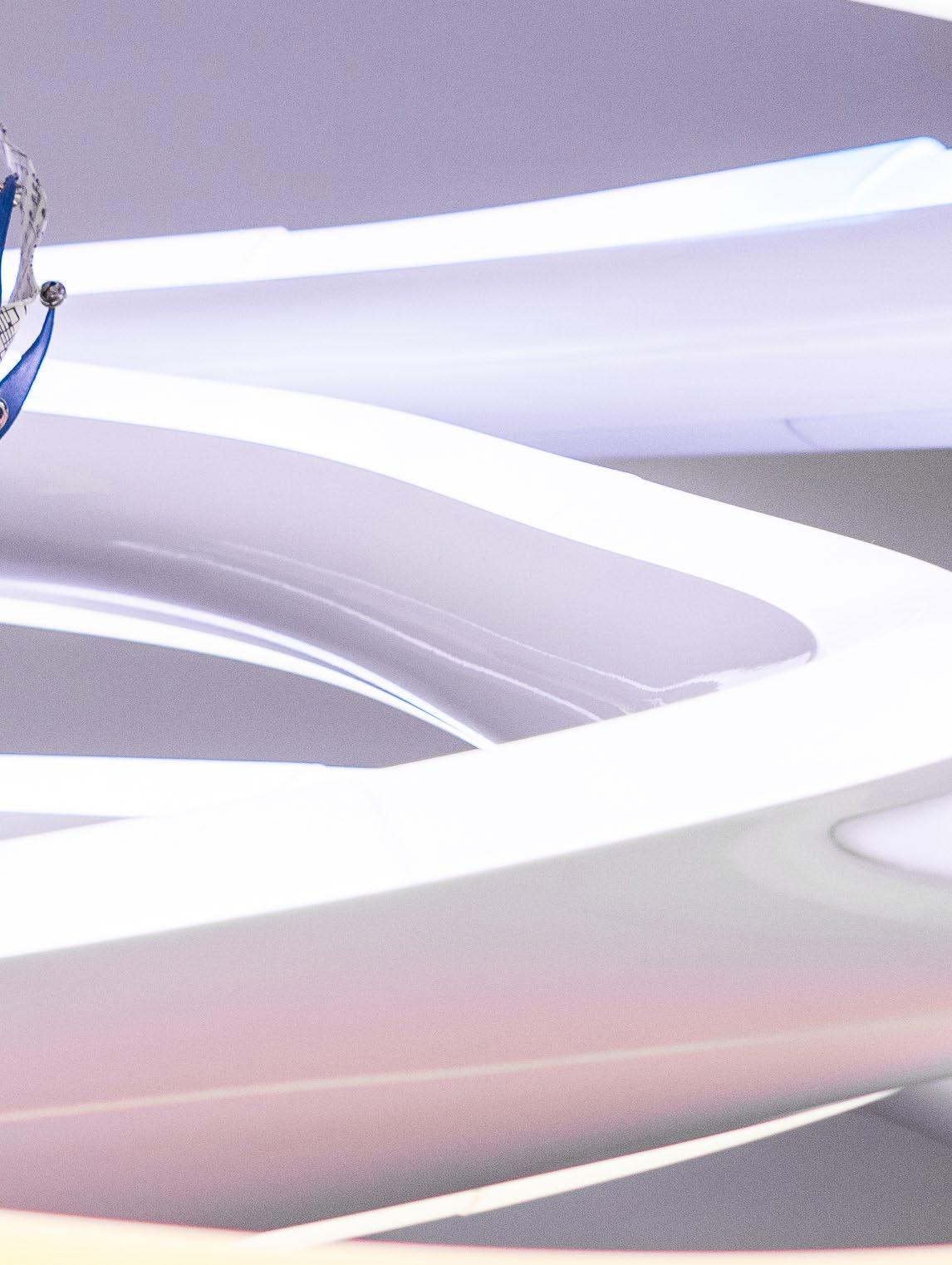
album that are reminiscent of Boris from the very early days and some songs that step out of line – all wonderfully packaged in one album. There was no particular approach to producing this album. It’s more that I always have had a lot of songs that I wanted to release and when we decided to make an album, we listened to all the songs and then decided which ones to put on the album.
DJ LIFE: For the album, how do you work on your collaborations? How do the connections happen and how do you execute each project?
Brejcha: This usually happens spontaneously. I start a song and sometimes I feel that I need a voice for it. It was the same with the songs on the album. With Ginger [on “Message in a Bottle” and “Rave City”], it’s supereasy. I usually already have a pool of different recordings from her and then I just choose one that fits. I got to know Malena Narvay via Instagram. I had seen a few videos of her singing and was immediately convinced. Working with her [on “Vienna”] was also very easy and relaxed.
DJ LIFE: Generally, what is your process for creating music?
Brejcha: It’s all very spontaneous. I usually start making a beat, then I add a bassline and see where the journey takes me. I love this way of working because it’s often very surprising where the journey goes. Sometimes, it can also happen that I just sit down and play the piano, so that I can express my current emotional state very well, and that’s also how the song “Gravity” came about in the past.
DJ LIFE: From your main studio gear, what’s your DAW? Monitors? Fave plugin or two?
Brejcha: I have been using ADAM Audio monitor speakers for years. They sound the best to me, personally. You can really feel the sound. Back then, I was in a music store where you could listen to all the speakers from different manufacturers in one room. The speakers from ADAM convinced me straight away. I work with Cubase software – I’m well-attuned to it. My absolute favorite synthesizers are [Spectrasonics] Omnisphere and [reFX] Nexus. I do almost everything with these two. I don’t use hardware. I love doing everything in the box.
DJ LIFE: How has your music-making approach evolved? With which gear/ software did you make your first tracks?
Brejcha: The music world is constantly changing and there is always a new, better synthesizer on the market. I still remember very well that I produced my first songs with the synthesizer One from FabFilter. That was ages ago, but I still use this synthesizer today. It just sounds really good and is timeless.
DJ LIFE: Which producer/ remixers do you most admire and why?
Brejcha: To be honest, I hardly listen to any electronic music in my private life because I don’t want to be influenced. At the moment, however, our member Moritz Hofbauer is a musician I really appreciate and who can also produce very good music.
DJ LIFE: What’s your DJ background? How long have you been at it and what gear did you learn on?
Brejcha: I don’t really have a DJ background. Back then, I didn’t know that you could be successful as a DJ. I always thought that I produce music, sell
it and that’s it... [laughs] I spontaneously learned to DJ from a friend in two days when I knew I had my first official gig. I taught myself the rest during the gigs.
DJ LIFE: In the DJ booth now, what gear do you use and why? How would you describe your style of DJing?
Brejcha: I use the latest mixer from Pioneer DJ and two CDJs that are also from Pioneer. I think I’m a very classic DJ…. without a lot of gimmicks. I love it and I think it’s important to play songs from start to finish, and not to make a transition directly after two minutes… because every song has its individual feel. Since I only play my own songs, I know them by heart and can create a special feeling when I play them.
DJ LIFE: You’ve become well-known for your joker mask and your interactions with your fans. Can you describe your relationship with your audience?
Brejcha: I love my fans. That’s why I also love interacting with them, not just at the gigs. I also answer every single message personally on Instagram, for example. I think that’s important, it’s fun and you can give a lot back to your fans that way.
DJ LIFE: What’s the hardest part about being a global DJ/producer? I’d imagine that managing your time is important.
Brejcha: Time. That is the greatest good. We have too little of it… especially as a lot of time is spent traveling. It can often become very stressful as a result. With little sleep, it’s a feat to play so many gigs all over the world… coordinating everything and always being onpoint onstage. But I am very happy to be able to travel all over the world.
DJ LIFE: Which DJs do you
admire and why?
Brejcha: I have been to a Solomun gig twice in the past. I like him very much. The music, his vibe. That’s cool.
DJ LIFE: What’s the DJ’s job these days?
Brejcha: Nowadays, the DJ job has changed somewhat. It has become more of an entertainer. It’s cool, but I think you have to keep the balance. I love being onstage, especially because I make people dance with my own productions. It gives you an incredible feeling that I wouldn’t want to miss.
DJ LIFE: What’s next for you?
Brejcha: We are currently in the middle of my album process. There’s still a lot to do. I’m also going to have a little party for my album where a few selected fans can be there. On May 1, my tour will finally start again. That means I’ll be on the road every weekend until the end of December. I’m really looking forward to it and I’m already very excited. I’ve been on vacation for four months so far and have produced a lot of new songs during this time, which I can now finally present. Musically, I’ll be taking a little break after the album release. But there will definitely be new songs this year. You can look forward to that.
DJ LIFE: I see you have three North American dates on your upcoming tour. What can fans expect from you when you return to this side of the Atlantic?
Brejcha: Oh yes, I’m really looking forward to it. People can expect lots of new songs – songs that I will probably play at my shows for two years before they are officially released. But I’m also making sure that my older songs don’t get short shrift. There are also certain songs that my fans always want to hear. So, it will be a colorful mix. I’m looking forward to it.
– Jim Tremayne
Australia’s Alison Wonderland has been a leading name in the world of electronic music for nearly a decade. While she might have gained notoriety because her very first U.S. gig was at a jam-packed Sahara stage at Coachella in 2015, in actuality, Alexandra Sholler’s career journey was already 10 years in the making.
Hailing from Sydney, she was a promising cellist before becoming inspired in the early millennium by the likes of Fatboy Slim, The Prodigy, and The Knife. In gaining DJ experience playing open-format gigs, she built a fanbase overseas before eventually breaking into the American market, in a very big way. Mere weeks before her Coachella and U.S. show debut, Alison Wonderland dropped her debut album, Run , which peaked at No. 6 on the ARIA Albums Chart and earned a gold certification. She was on her way.
Two more albums – 2018’s Awake and 2022’s Loner – plus a slew of charting singles like 2018’s “High,” 2019’s “Lost My Mind” (with Dillon Francis) and 2022’s “Picture” (with Slander and Said The Sky) launched her further into the EDM limelight. But all wasn’t always well, as she spoke openly about her mental-health issues during this time. Her depression informed the Awake album. It also included a suicide attempt, she said.
Fast-Forward to the Present: As a new mother, the 37-year-old artist sits down with DJ LIFE to discuss how her son, Max, has changed her outlook on life. She also tells us how it wasn’t all that long ago that she was performing at some of the world’s leading music festivals –including Coachella and the Electric Daisy Carnival (EDC) Las Vegas main stage – while she was 8- and 9-months pregnant.
We caught up with her just before she arrived for Miami Music Week. Not only was performing with Kaskade a highlight of her time during dance music’s biggest week, she also made a surprise appearance during Ultra Music Festival at the Worldwide stage alongside recent collaborator, Dimension.

The rest of 2024 is looking bright for Sholler, who will be performing as Alison Wonderland at Electric Daisy Carnival in Las Vegas, Hangout Music Festival in Alabama, Ultra Korea, Ubbi Dubbi Festival in Texas, Insomniac’s Beyond Wonderland at The Gorge in Quincy, Wash., Summerfest in Milwaukee, Red Rocks in Denver, Harrah’s Resort in Atlantic City, and the world-famous Rock in Rio fest in Brazil, among others.
It’s not just her Alison Wonderland persona that’ll shine in ’24, as Sholler will also be performing at some of the world’s leading festivals (Bonnaroo, Electric Forest, and Lollapalooza) as alt-persona Whyte Fang, a project that was started before Alison Wonderland. In discussing the gigs, Sholler was thrilled to finally share some live Whyte Fang shows with her existing fanbase, as well as new fans she’s gaining along the way. In a very open conversation, it all went like this:
DJ LIFE: When did you begin exploring dance music? Did you have any musical training or anything to entice you to do this full-time?
Alison Wonderland: Nothing enticed me to do this full-time. In fact, I never thought this would be a career that was sustainable or real. I originally was a classical cellist in Europe – I was playing in orchestras, and I was studying my entire life. Then I fell out of love with it and somehow found myself being a door guard at an underground nightclub in Sydney – and through that is how I first discovered dance music. It was life-changing.




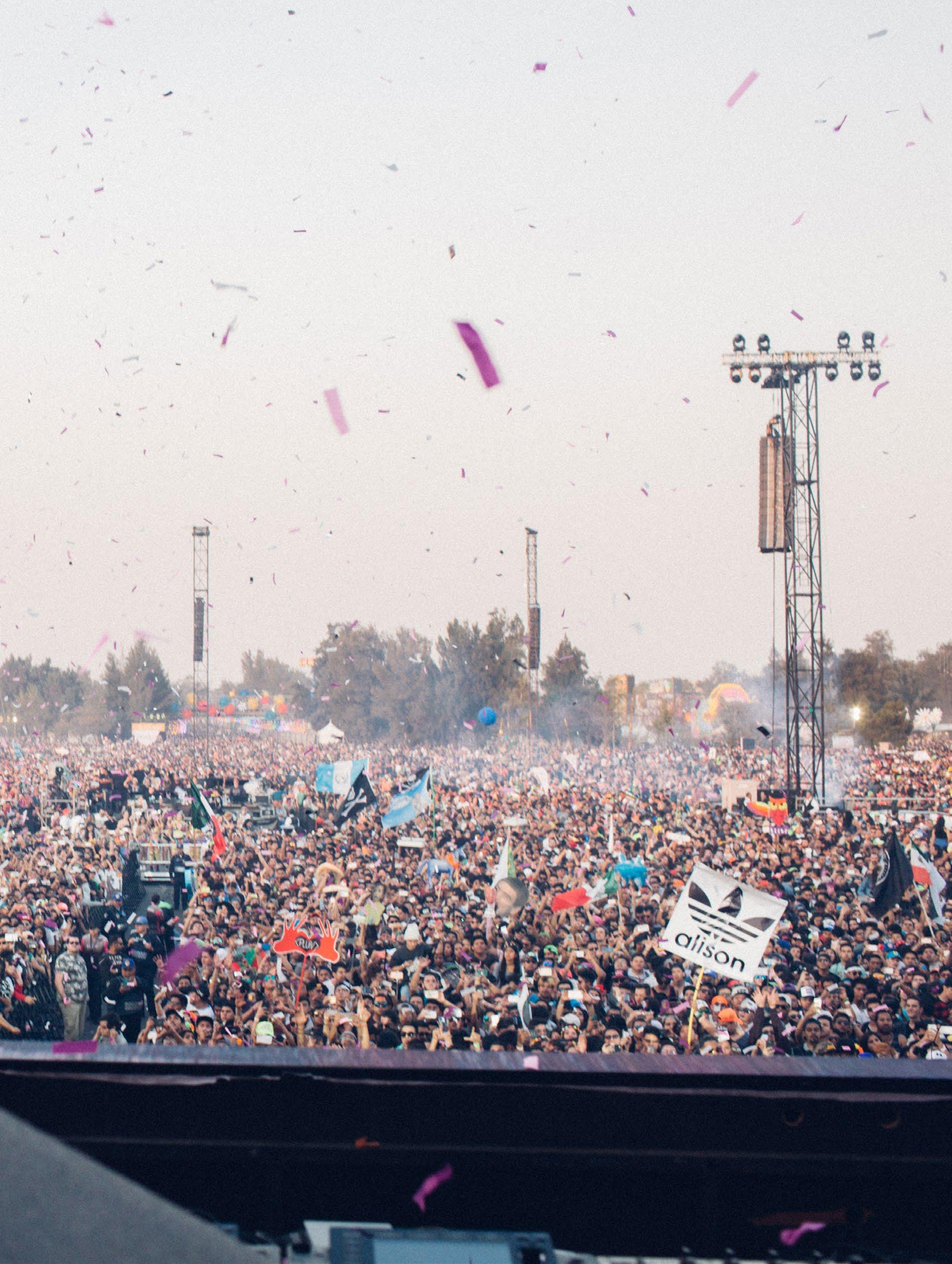 Jared Tinetti
Jared Tinetti
Jared Tinetti
Jared Tinetti
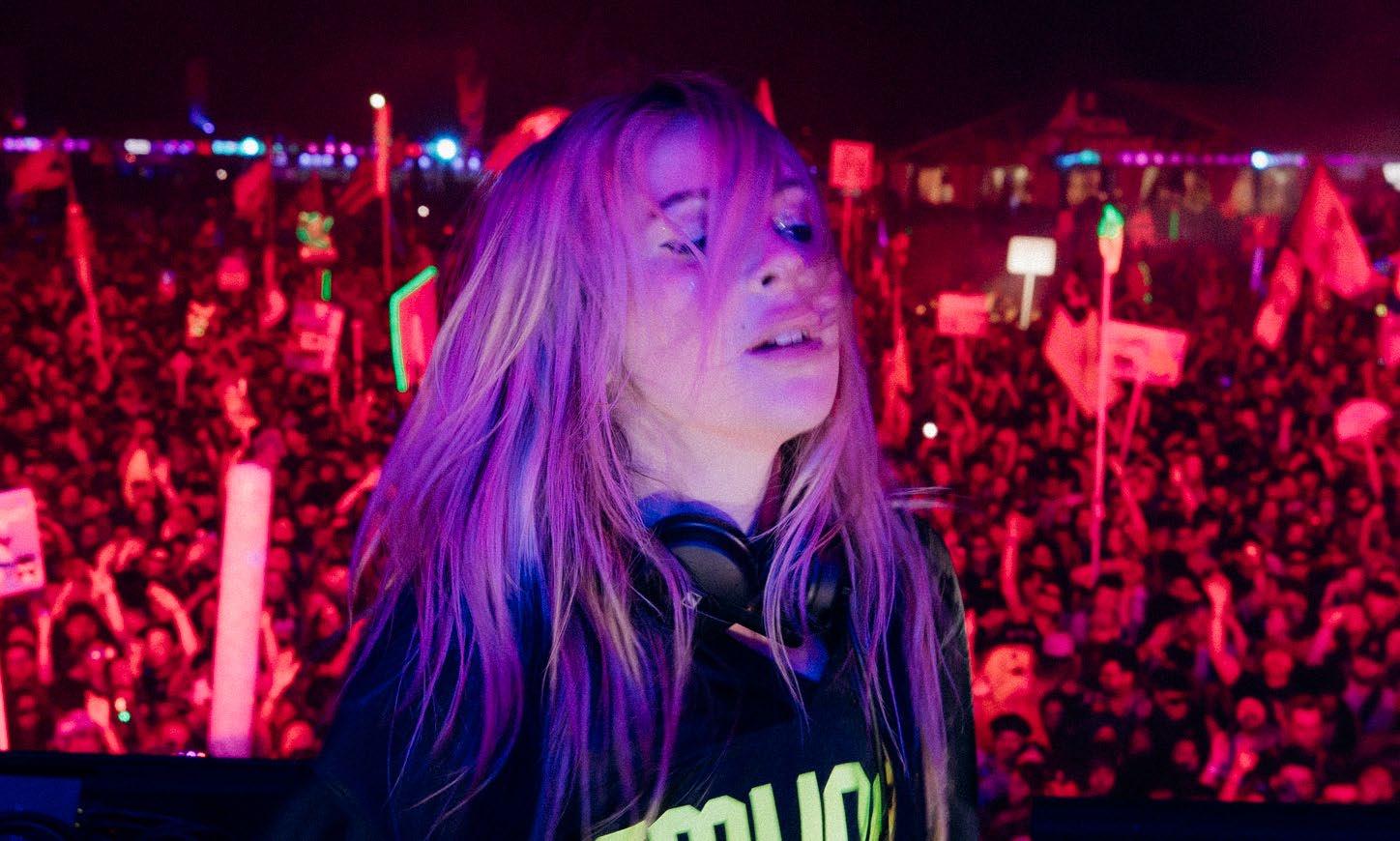
DJ LIFE: What music caught your ear?
Alison: The only experience I had before working in a club – that I loved and gravitated towards – was Fatboy Slim and The Prodigy. I was listening to so many other genres at the time. There was a DJ who was playing an underground show at this club, and back then, everybody would be so excited to see the new tracks that a DJ would play, each time that they played. It was like a whole culture that I don’t know is as alive today. He played “Silent Shout” by The Knife, and I felt so attracted and gravitated towards what was going on that I ran over to the DJ from where I was sitting to ask, “What is this?” When he told me, I became incredibly obsessed with The Knife. That was when it [first] clicked for me, that I wanted to explore this.
DJ LIFE: How did you first begin exploring production?
Alison: I saved up for a MacBook and I got a cracked version of Ableton and Silence (CSound). DCUP, an [Australian] producer, gave me some drum loops and he showed me Ableton. Then, I started making music that sounded like The Knife [laughs]. And that’s how I started producing…
DJ LIFE: And how about DJing?
Alison: When I first started DJing, it wasn’t about electronic music. I was an open-format DJ for many, many years. Around that same time, Garth [Crane], who is my manager now, was the booker for the club. Knowing I was musical, he suggested I start DJing since they needed somebody to close to club. He taught me how to DJ, and two days later, I was closing the club. Back then, in the peak of A-Trak and DJ AM, it was all very open-format. So, I wasn’t playing just electronic music, I was playing all genres – and I still kind of sneak that into my sets now.
DJ LIFE: And you fell into it, then?
Alison: I became really obsessed with DJing. I also never really connected producing with DJing because I thought they were such different skillsets; they were so different to me, in my head. When I was making music, I never actually played it when I was DJing. And this
is when I was producing under Whyte Fang, back then, and DJing under Alison [Wonderland]. There was a year early on in my career where I toured for a rum company around Australia, and I think I did about 250 shows in a year… and I was playing at pubs. I actually built a fanbase just by doing that, and I was travelling by myself, sleeping in the pubs [laughs]. It was very different than it is now, but I loved it.
DJ LIFE: Still, you laid the groundwork for a career…
Alison: I built a fanbase in Australia, which just kept growing, so I started throwing mini-festivals called the Wonderland Warehouse Project. They would sell out, and we were doing 3 to 5k capacity venues to throw these crazy underground warehouse festivals with all these amazing acts that I love from across the world. We would throw them all throughout [Australia], so about five or six different locations every year. I brought it to America, and it did really well, so I’ll definitely be doing them again soon.
DJ LIFE: And throughout all of this, you were working on music production as well?
Alison: Throughout all of this, I signed with EMI and basically made the call to move all of music production to Alison Wonderland rather than Whyte Fang because I didn’t really have a face for Whyte Fang. Weirdly, [songs] were getting played on BBC Radio 1; I don’t even know how they found [them]. These were the early days of SoundCloud, so they likely just found it
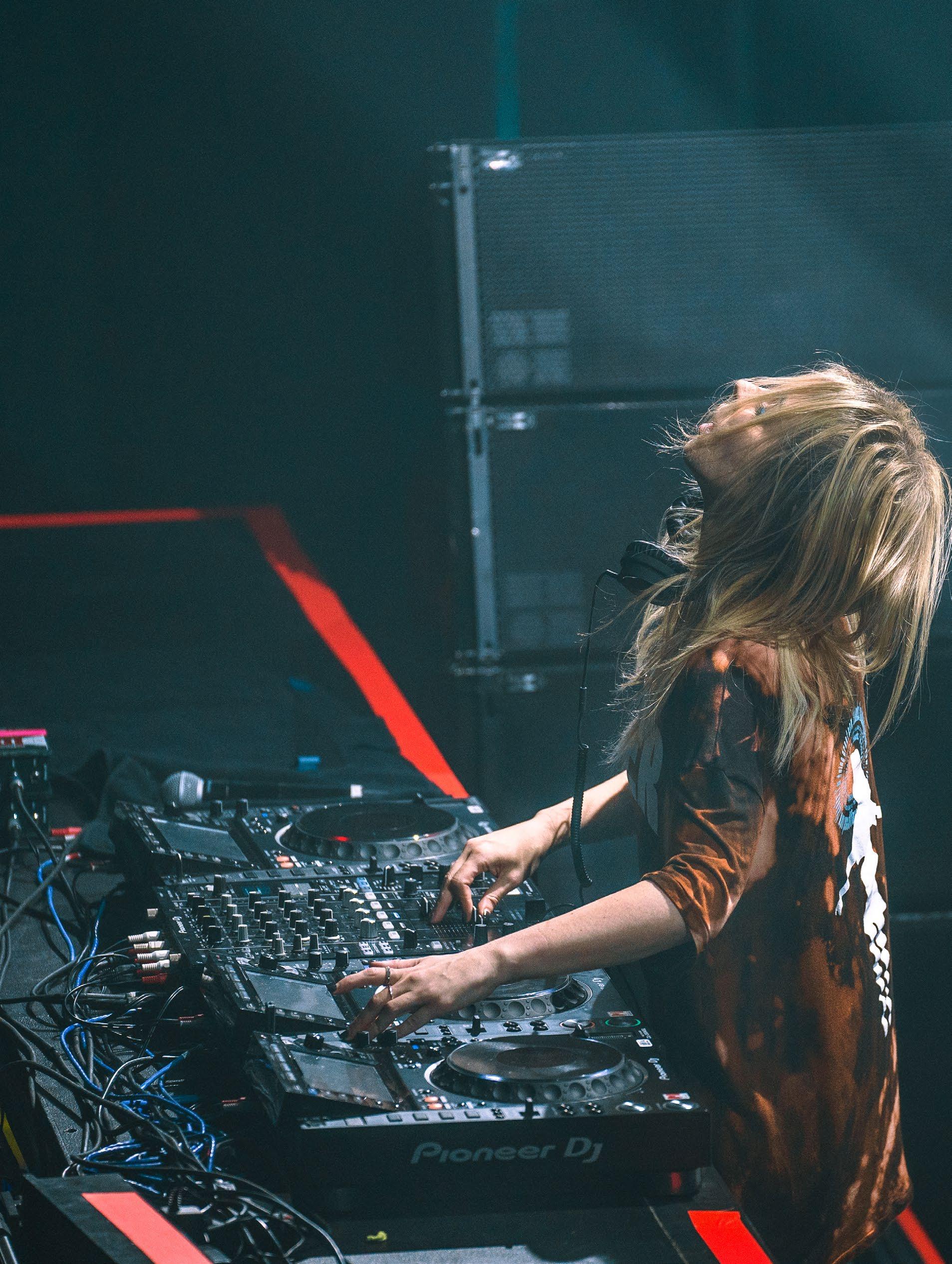
on there. Once I started making music under Alison Wonderland, I got offered a Diplo & Friends, snuck some of my unreleased music in there, and two weeks later I released “I Want You” and an EP. It went to No. 1 on Hype Machine, which at that time was a big deal. Then other DJs were flipping it, and those flips were going to No. 1. Then, I found an amazing agent over here.
DJ LIFE: So, then things started happening rather quickly for you…
Alison: I just want to say that this all happened after a span of about 10 years of people not giving a shit about me, telling me my music wasn’t good, etc. I’m skipping over all the parts where I was told “no” hundreds of times and wanted to cry or did cry . My Diplo & Friends mix went viral too, and around that time Coachella called my agent and wanted to premiere Alison Wonderland in the U.S., so that was my first American show. I was like, “Holy fuck, I’m going to do this right.” So, I sat in a room, and I made an album called Run , which I released two weeks before Coachella, and that debuted at No. 1 on the Billboard Dance chart.
DJ LIFE: Sounds like quite a time…
Alison: This was in 2015… I turned up to Coachella that year with a crappy little deck and no visuals –we just had the GoPro on me as visuals. It was the most full the Sahara Tent was before 6 p.m., and I played at 2 p.m.! I’ve never experienced anything like it before… it was just crazy! I think my parents finally understood [laughs].
DJ LIFE: That’s awesome. So, your parents came for your Coachella set in ’15?
Alison: Yeah, and up until that point, I don’t think they really understood what it was that I did. I would play, and they never really understood or listened to what I was making. So, I think when they saw it all out there with all these kids screaming the words… and this was also the first time I had played a full album with all of my own music. I’m honestly glad it took me 10 years to get an album out because when I listen to my earlier music I’m like, “Oh my God, thank God nobody heard that!” I really found my sound – and every point at every angle just hit at the right time for me.
DJ LIFE: Any other memories from that first-ever U.S. set?
Alison: It was a really crazy moment. Just before I was about to get onstage, the Sahara Tent was absolutely empty. My boyfriend at the time had actually played Coachella a couple of times, but he was out in the audience. I texted him saying, “I don’t want to go on, nobody’s here, this is so embarrassing.” He just responded with, “Trust me, once you hit play on that intro, people are gonna come running.” And that’s exactly what happened. As soon as I pressed play, people came running… it was like a stampede. Then, all of a sudden, it was full. It was really, really insane, and I remember it like it was yesterday. I feel like when I’m in a nursing home, really old and senile, I’ll just be living that day over and over again [laughs]. I will say, to this day, every opportunity I was given and am given, I take full advantage of, and I put everything into it.
DJ LIFE: What was your early DJ setup like versus what you prefer to play on now?
Alison: [Laughs] My setup… [laughs]. You probably don’t even know what this is. I had a Pioneer DJ CDJ-100 and a Pioneer DJ CDJ-400, which I kept at the edge of my bed because my bedroom at the time was the size of a queen-sized bed. So, I had my decks on the

end of my bed, which is where they would live, up against my mirror. I would mix through my headphones or through a tiny, little laptop speaker that you would plug right into your laptop. My mixer was a two-channel mixer, and I don’t even remember what it was.
DJ LIFE: How about now?
Alison: My set-up, even now, is still simple as fuck. I write best when I feel like I’m in a bedroom. I write best when I feel like I’m still a bedroom producer. I still have a room in my house which is just for me to make music. I just have speakers, my laptop, a Manley reference mic, Universal Audio Apollo Twin audio interface, Access Virus TI2 digital synthesizer, and an OP-1 [synth/sampler/sequencer], which I don’t really use. I actually prefer producing just in my headphones, I don’t even really use my speakers that much. It’s funny because REZZ actually said the same thing when you spoke to her. I think we’re quite similar in the way that we produce. I also have a bunch of instruments in my studio. I have an electric guitar, normal guitar, my cello, of course, some African instruments, and a bunch of weird things everywhere.
DJ LIFE: In late 2022, you launched your own label, FMU Records. What would you say goes into running a successful dance label these days?
Alison: Well, the number one thing is organized people around me because I am not an organized person like that. I have a great team around me managing the label. I think you need to have your ears to the floor. I’m always very much listening to up-and-coming producers and artists, and things that excite me – and I’m very excited right now, actually. I’m excited for electronic music because there’s another turning point coming. I don’t know what it is, but it excites me. You need to be able to hear raw talent, and look, I’m very good at that. I’m a good A&R; a good DJ is a good A&R. I know how to pick songs that people will like, and that’s part of why I’m a good DJ. I can hear when things are gonna hit correctly, and I think that’s important. Also, just really caring about your artists because I think in this day and age, you need to treat artists like a person and not a statistic, which a lot of major labels do, and I think that’s disgusting. I don’t like putting pressure on artists to promote things. If they want to they can; if they don’t want to they don’t have to. My label is just a stepping-stone for these people to be heard a little bit more, and they can do what they want with that. That’s all I care about, and I just want them to feel confident that their shit slaps, you know?
DJ LIFE: You released your Whyte Fang album on FMU. Is it true you made the entire album while you were pregnant?
Alison: Yes, that is true. There were two songs that I had made a few years ago, but I would say I made about 80-percent of the album while I was pregnant. I finished it at six-months pregnant.
DJ LIFE: Did you notice any differences in the creative process?
Alison: I felt super-creative pregnant, and I can’t explain why. The beats that I was making just did not fit in the world where I would put stuff for an Alison album. Those kind of beats would never get a main feature with an Alison album; they would just be an album track. I really feel like I wanted a home for that kind of energy, the more industrial stuff. I’m also not singing on this stuff, really, because I’ll have guest vocalists. It was really fun for me because I wasn’t as emotionally drained by the process because it was mainly just producing. I’m just really drawn to that kind of sound design, and I don’t think that it gets featured or highlighted as much in Alison’s world.
DJ LIFE: But people really liked it…
Alison: It’s funny because the other day Kaskade was getting interviewed and somebody asked him what his favorite Alison music was, and he was like, “Whyte Fang.” It’s also funny because a lot of artists have reached out about the Whyte Fang project and said it was one of their favorite albums, which meant a lot. I felt really creative. I was in a different part of my life where I was pregnant, successfully, and that took a long time for me. I also had Coachella coming up for Whyte Fang, and look, Whyte Fang, I’ve always had a vision for. Even before I got signed to EMI as Alison, since it costs money to put on a production like that, I’m finally in a place where I’m able to do exactly what I envisioned back then, but better. So, I felt like it was the right time to do this, and honestly, that show at Coachella last year in 2023 was one of my favorite shows ever. That’s be-

cause exactly what I saw in my head, I saw in real life, and that is one of the weirdest feelings. I just felt really happy to be where I was. As I said earlier, when I’m given an opportunity, I take it and give it all I’ve got. So, when I got the Coachella offer for Whyte Fang, I was like, “Well, looks like I’m making an album.” I had tunnel vision, and I wanted this to be perfect. I was extremely tired when I was pregnant, but I was still very inspired.
DJ LIFE: So those two Coachella experiences must have been very different for you – Alison Wonderland and Whyte Fang…
Alison: Alison is a much bigger act, and I feel a lot more pressure because I feel like there’s a lot more acts watching. Also, when I’m playing Alison Wonderland shows, it’s very personal. It’s like reading my diary. I go back to the very moment I was in when I made it, so it’s quite a lot and emotional for me to play shows. The main difference was that I was eight-months pregnant for that set, and I’m also not at the forefront of that performance. With Whyte Fang, I’m inside of an LED box, and the only time you can see me is when I’m lit up with blacklight and my entire outfit is UV-blacklight-reactive. All around me is transparent LED, so sometimes you see me and sometimes you see visuals. It’s very interactive with the visuals and the lighting, which makes it more of an art installation and sonic journey.
DJ LIFE: Then you played EDC Las Vegas a month later. What was that like?
Alison: Yup… so, you can’t really breathe [laughs], because when you’re pregnant the baby is taking up so much space. When you’re pregnant your organs get moved around and you literally can’t breathe, so I was out of breath every step. I think once I stepped out onto the stage, it was muscle memory, so I didn’t notice as much. The weirdest part is that when I was playing a really heavy beat, the baby was kicking the entire time. So, I was feeling this thing kicking my ribs and my stomach while I was playing, so it was like there were two of us on stage [laughs]. I feel happy every time I’m given an opportunity to play a show because it’s one of the only things I love, so just to be up there and playing still was amazing. I also want to add that I did this all very safely. I had doctors all around me. We had ambulances on site to check me after every performance. I don’t want everyone to think this is a chill thing to do!
DJ LIFE: How many others can say they’ve done that?
Alison: I believe Amelie Lens and Aluna played when they were pregnant, but I just don’t know if they were that pregnant. I think when something like this happens in your life you just adjust and surrender to the change, and then you have a new way of managing your time. I must add, having a supportive partner in this has made a world of a difference, so I’m able to still do what I want, and I’m so lucky. It was a really, really hard journey for me to become successfully pregnant and successfully give birth. I was told at the beginning of my preg-
nancy to live my life and let the baby cook or I’m gonna go insane, so that’s what I did.
DJ LIFE: Did you think you’d be working and doing shows during your pregnancy?
Alison: Look, I have a very supportive team, and my plan was to keep doing it… but if I did not feel well , then I would not play. For example, the last month that I was pregnant, I wasn’t allowed to travel for a long period of time, so I couldn’t make it to two festivals. But those were the only things I missed throughout my entire pregnancy, and the promoters were totally cool about it and understanding. I’m playing Hangout Fest this year, which is one of the ones I didn’t get to make last year. I know there were some fans who were angry with me, but I legally couldn’t travel, nor did I want to endanger my child. I was so much in survival mode when I first got pregnant, that I didn’t even want to treat it as if there was a baby. I needed to treat it like it was science because I didn’t want to get too emotionally attached to what was happening because I’d had three miscarriages in the past on top of other things, which I’ve been public about, and no one knew. I had to put on a happy face even though it was a very horrible time in my life, very horrible. I just couldn’t put myself through that again mentally, so I had to treat it like science until it progressed more. The better everything looked, the more relaxed I felt. But I just felt that if I was

sitting still doing nothing, I would go crazy and be a complete mess. That was another reason I woke up every day and took myself into the studio to make music. Otherwise, I think it would’ve been really hard for me. This got me through to the other side.
DJ LIFE: Since the birth of your son, Max, how have you changed as a person and as an artist?
Alison: As a person, it’s changed me, but I think as an artist you’re always changing. I don’t know if it’s because of that or not because I’m always evolving and always will evolve. Even if this didn’t happen, I’d still be evolving; so, as an artist, it’s quite separate for me. But as a person, I have become incredibly empathetic, even more than I was earlier because I see people now as someone’s kid. It’s hard for me to watch violent things, which used to not bother me. It’s funny because my fiancé [Ti West] makes horror movies, but I’m just a little more sensitive. I think more about the world, the bigger picture, and how it’s going to impact the future. I think about what I can do to make my kid be a positive impact in the world. I really didn’t know what love was until this… and I know everyone says that and it sounds so cheesy. Also, he’s really cool! I think because I played so many shows with him while I was pregnant, he’s so chilled out and used to it that even hearing the music now, it doesn’t affect him at all. He loves it.
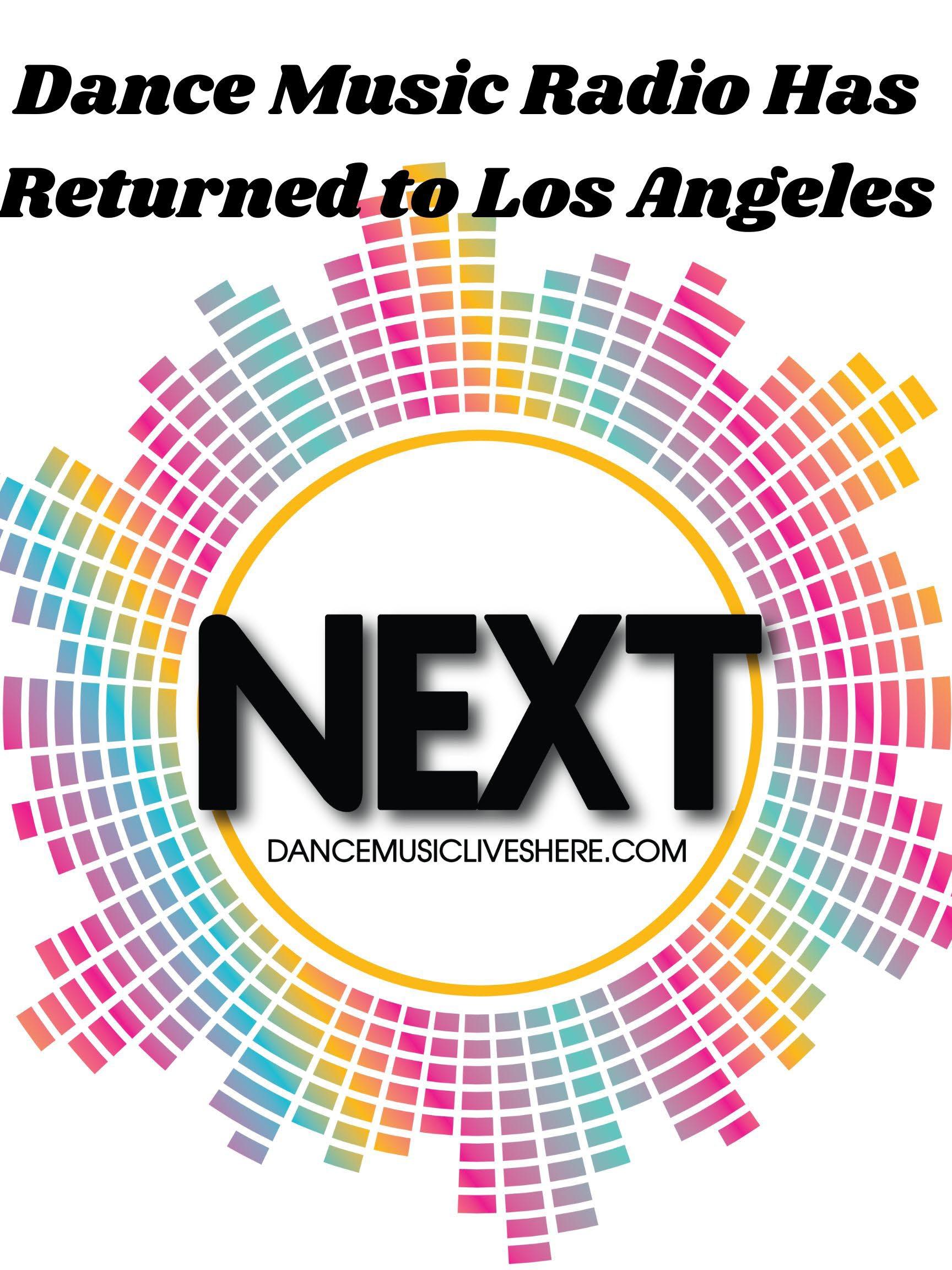
 By MMW Photographers
By MMW Photographers
Miami, Fla. – This past March 18-24, the dancemusic world again descended upon South Florida for what has become known as Miami Music Week. With its slate of area club gigs, rooftop bashes and one-off/pop-up events (like the EDMAwards at Eden Roc Hotel), MMW gatherings stretched from South Beach to Wynwood, culminating with Ultra Music Festival at downtown’s Bayfront Park (see Festival Spotlight Pg. 34). It all looked like this:


 Breakaway Beach: Loud Luxury onstage. Alison Wonderland @ Brownies & Lemonade. Nate Bouchard
Mesmerizing: Rezz @ Mana Wynwood.
Breakaway Beach: Loud Luxury onstage. Alison Wonderland @ Brownies & Lemonade. Nate Bouchard
Mesmerizing: Rezz @ Mana Wynwood.



 EDMAs: Armin van Buuren & Hollywood Hamilton. Masquerave: Noise Cans on the decks. Ian Asher @ Breakaway Beach.
EDMA Winners: Deadmau5 & Kaskade.
Factory Town: Green Velvet & Dom Dolla.
EDMAs: Armin van Buuren & Hollywood Hamilton. Masquerave: Noise Cans on the decks. Ian Asher @ Breakaway Beach.
EDMA Winners: Deadmau5 & Kaskade.
Factory Town: Green Velvet & Dom Dolla.


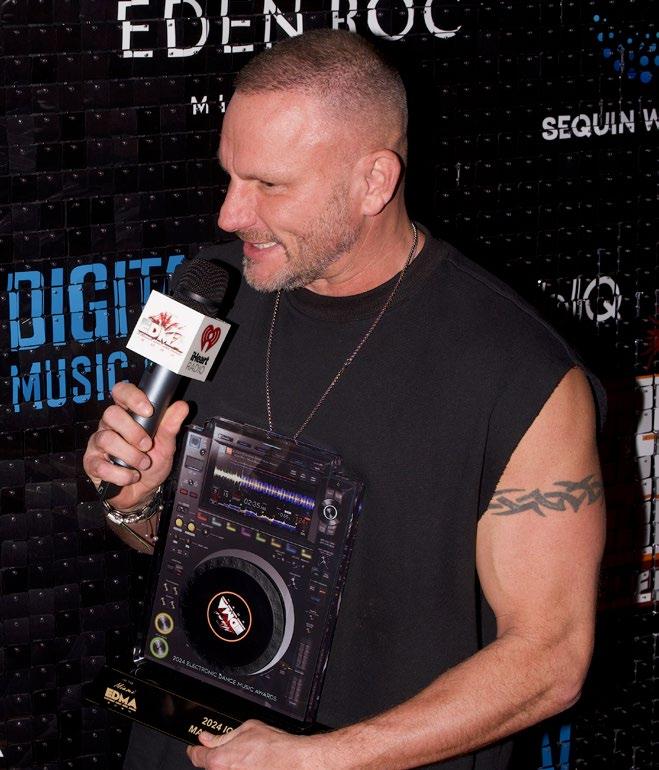

 Mana Wynwood: Deadbeats vs. Cyclops.
Mojave Grey @ Breakaway Beach. Nate Bouchard
Interviewed: Night Tales @ EDMAs.
Mana Wynwood: Deadbeats vs. Cyclops.
Mojave Grey @ Breakaway Beach. Nate Bouchard
Interviewed: Night Tales @ EDMAs.



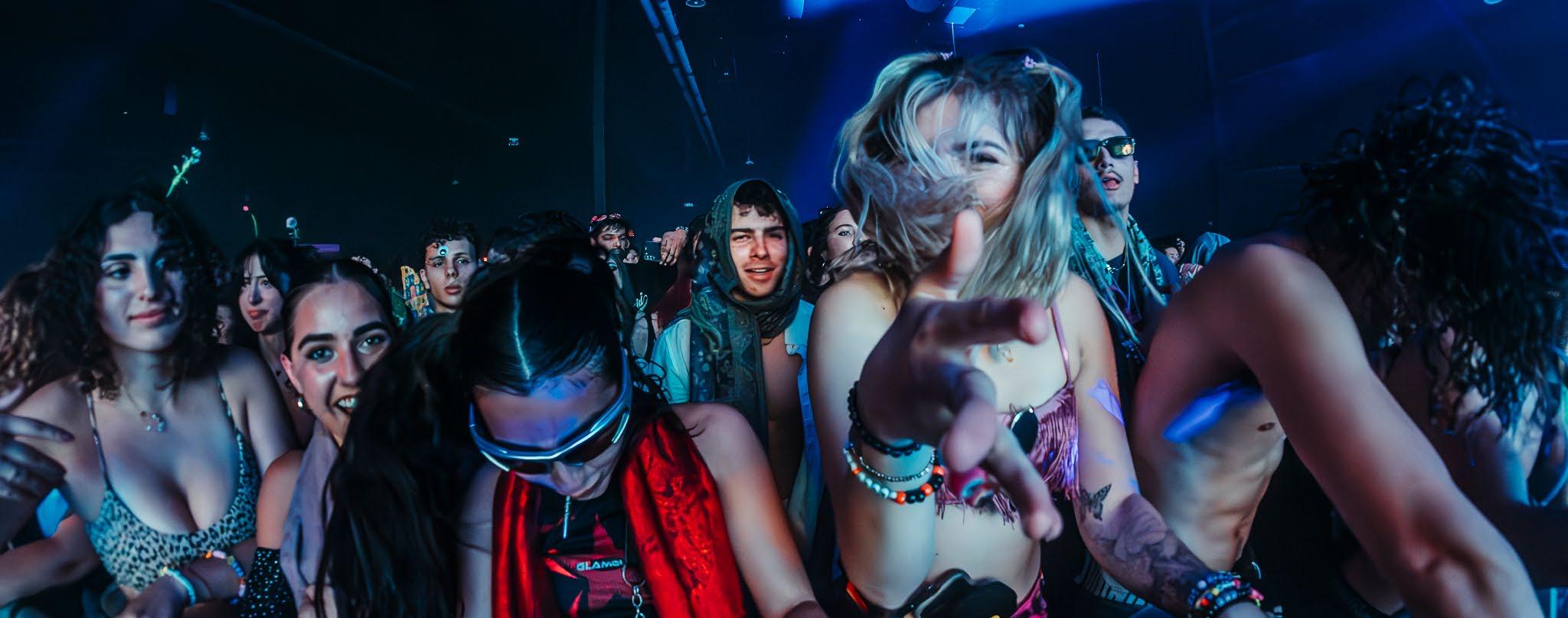 Legends: Cajmere @ Cajual Party. Tritt Visuals
Paradise Party: Carlita & DJ Tennis
Legends: Cajmere @ Cajual Party. Tritt Visuals
Paradise Party: Carlita & DJ Tennis
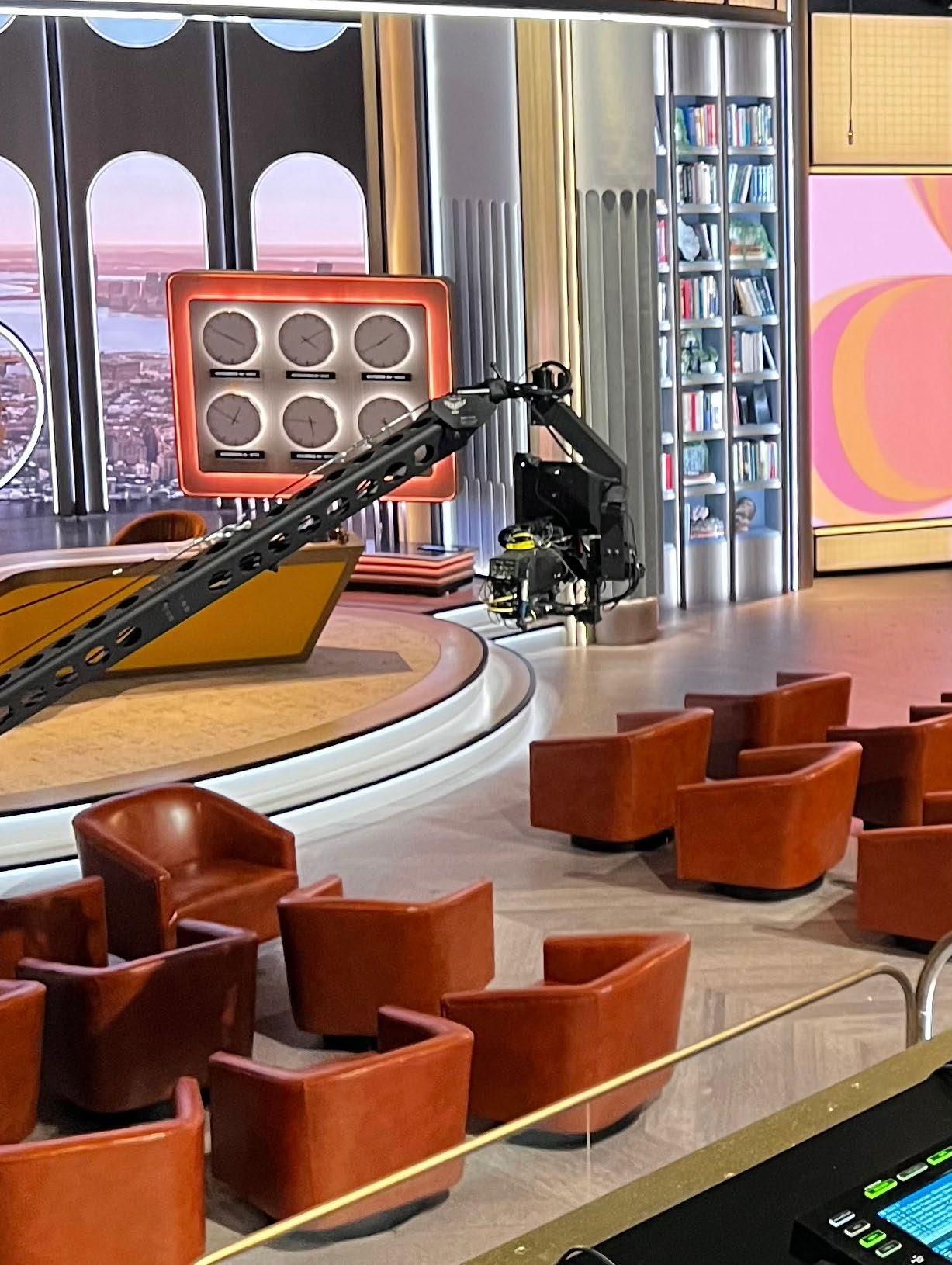
New York City – The doors open at Studio 41 in the CBS Broadcast Center on Manhattan’s West Side and, as the fans pour into the day’s second taping of “The Drew Barrymore Show,” they’re greeted with a spirited musical mashup From her DJ-booth perch in the back of the room, DJ Holly T drops the Rihanna/Whitney agglomeration (“We Found Love”/“I Wanna Dance With Somebody”), and the formerly quiet room immediately brightens, the people begin to loosen up as if they’ve entered a party.
Just like the show the fans are about to witness, the initial musical salvo is upbeat, familiar, and affirming. And just like the experiences of many DJs, that’s a big part of Holly T’s regular job these days: Play the right music for the moment, get people grooving, elevate their mood. As a DJ, she may be one of many, but she’s working for a talk show that’s seen by more than 1.2 million people per airing. As De La Soul once offered, stakes is high.
The show morphs quickly from segment to segment. In one instant, Drew’s sidling up to an actor on the couch, sharing a moment of truth, then she’s hamming it up with ebullient sidekick Ross Mathews… or she’s welcoming professional wrestlers onto the set… or doing a promo for a new affiliate station. Accordingly, the set changes and brief downtimes require a quick musical perk-up, and Holly’s there to provide.
Along with uber-energetic MC Joey Koala, Holly keeps the energy flowing, as she drops the beats with hits from Lady Gaga, Bruno Mars, Kesha, the Bee-Gees, and Run-DMC. The crowd loves it and, after Drew commiserates directly with the audience for a last time, everyone leaves the show knowing that they’ve had a unique experience – it’s been a day of genuine star power punctuated by insta-party vibes.
Working the show since this past September, Holly’s become accustomed to the syndicated-TV world and its fast-paced, high-stress, two-tapings-per-day environment. But, as she reports, she wouldn’t have it any other way and she’s grateful for the gig, which has taught her much and opened more professional opportunities. From spinning club gigs at Manhattan venues like the upscale Slate and playing rowdy, roving, retro parties like Gimme Gimme Disco, Holly’s been busy and 2024 promises even more activity.
It wasn’t always like this for the U.K.-born Deborah Holly Taylor, 39. In fact, as Holly tells it, many of the bigger moments in her life have come almost accidentally. From her early career as a professional dancer to her move to the States to her entry into the musical-artist world and, ultimately, to DJing, it’s been quite the adventure. DJ LIFE recently caught up with the British spinner to discuss working in and out of the TV world.
DJ LIFE: OK, Holly T… what’s your real name and where do you live?
Holly T: My government name is Deborah Holly Taylor – aka DJ Holly T. I have always secretly hated the name Debbie, so I go by my middle name Holly. I am 39-years old, but my industry age is 27. [laughs] Or not… and I
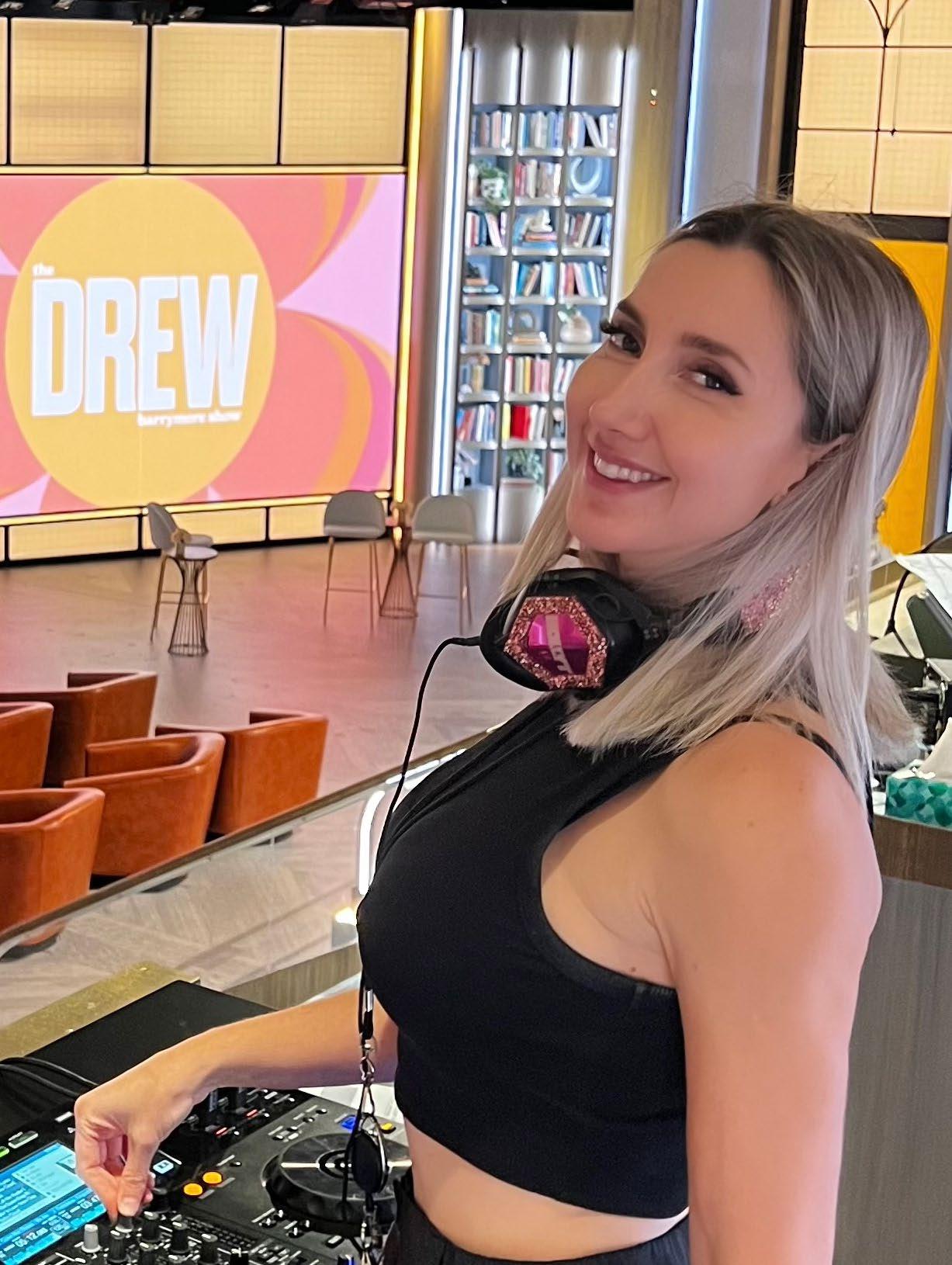
live in the lovely and beautiful Garden State, Dirty Jersey. I truly believe I am a Jersey girl at heart.
DJ LIFE: Jersey girls usually don’t have British accents. So, where did you grow up? Did you have music in your house?
Holly T: I grew up In North London – Finchley to be precise – and moved to the U.S. at 19-years old. I had no family here and really no plan. And yes, there was always music in the house. My mother was a mod who loved Motown and my father was a rocker.
DJ LIFE: Musically, what were your first influences and your first pursuits?
Holly T: Oh my God… Madonna! Also, Missy Elliot, Aaliyah, and Janet Jackson to name a few. I didn’t really pursue music early on – I was a professional dancer. I auditioned shortly after coming to the U.S. for the Alvin Ailey School. I spent four years there and realized I didn’t love dance like I thought I did… which, in a way, was kind of heartbreaking.
DJ LIFE: When did you move to New York? What was it like for you?
Holly T: I moved to the U.S. at 19 – insane story. I actually missed my flight home and called my mum to tell her I had decided to stay. So, of course, with that, I had to go to school or at least stay here as a student. I auditioned for Ballet Arts and then auditioned for Alvin Ailey. Training at Ailey was grueling. I loved it the first year, but as time went on, I realized it wasn’t for me. I realized I didn’t want to dance at 40-years old. Being a dancer is a very hard career path, especially on your body, and I also think I grew as a person. It was like a selfdiscovery phase, realizing maybe there was more I had to offer than just dance.
DJ LIFE: What kinds of DJs and dance music did you listen to in England?
Holly T: Growing up, I listened to Kiss-FM radio and

was a big fan of Top Of The Pops, but that was mainly because I wanted to be a back-up dancer.
DJ LIFE: What did you think of DJs before you got into DJing?
Holly T: I am the youngest of three girls and my older sisters listened to garage, drum-n-bass, jungle, and happy hardcore. If I’m honest, I just “liked” it because I thought they were cool. If someone had told me one day I would be a DJ, I would look at them like they have two heads. It definitely wasn’t in the plans. DJing really came to me, growing up, especially in my teens. I listened to pop/hip hop. I wasn’t particularly a big house music fan – even though at 19 in New York, I was going to see Boris play at Exit and was hanging out at The Roxy, Crobar and Limelight. But when I met my publisher and EDM was coming up, I really fell in love with the genre – the anthems, the big vocals, I loved Avicii and Swedish House Mafia to name a couple.

DJ LIFE: So, what made you want to pursue making music?
Holly T: I was always writing songs, really just for me, with no intention behind making that into anything. But I started to pursue music a little later on in my late 20s when I met my publisher and spent four years writing toplines –this was my introduction into EDM. I was signed to Big Management, which was also my introduction into the industry. Although I didn’t get very far working with them, I learned how the industry works and how important it is to make yourself valuable. I would say this was a good training period for me.
DJ LIFE: How did things progress?
Holly T: Once I left Big Management in 2018, I self-released my first song “Just You & I,” and it made it to The Mint List on Spotify. I was very proud. I spent the next two years releasing music. I had great editorial support and radio play, and was even on the cover on Friday Cratediggers twice! It was awesome.
DJ LIFE: How did you begin to DJ?
Holly T: I was in Amsterdam for Amsterdam Dance Event and a fellow producer, who I had self-released my first song with, convinced me the importance of learning how to DJ. I think I was a little scared, to be honest, but I knew as soon as I began I had discovered a new passion.
DJ LIFE: On what gear?
Holly T: I began learning on CDJ-2000s and a Pioneer DJ DJM900NXS2 mixer. He taught me the
basics and, when I got home, I started working with another friend who taught me how to work with Serato. I, then, bought the Pioneer DJ XDJ-RR controller and started using rekordbox more. I favor both, depending on the gig.
DJ LIFE: When did you start to get DJ gigs and what kinds of gigs were they?
Holly T: My first gig was at the Queens Casino. I played a set I had spent weeks putting together and rehearsed every day. I was so insanely nervous and had real “imposter syndrome.” I think it was a tech-house set. I got a few compliments, but I am sure people were just being kind. Then, I did some real low-level gigs that were like six-hours long and paid miserably low. But, the great thing about these gigs was I was being paid something to practice for six hours. I would YouTube different mixing methods and try them on these gigs, and just get really creative. I would also ask club bookers if I could do a free hour gig. I always say to DJs coming up that the experiences are the real lessons. Knowing how to quickly adapt to new equipment you have never worked on, to problem-solve in under two minutes, to set up your board after the other DJ has just played and to build confidence and learn to read a crowd... it’s invaluable. You can’t learn these things in a lesson or just from YouTube.
DJ LIFE: What was your next step?
Holly T: After really honing my skills, I focused on how I marketed myself. I would reach out to anyone and everyone and repeatedly follow up. I began working nonexclusively with a few agencies and did anything from corporate events, celebrity parties, clubs, was a regular in Montauk and now I’m on TV. It, for sure, is a hustle, but hard work and a great attitude really pays off.
DJ LIFE: How did “The Drew Barrymore Show” opportunity happen? What was the show looking for in a DJ?
Holly T: I started the Drew show this past September. They were looking for fun songs to warm up the audience and create the right vibe before the star herself came on to the stage. I love to play well-known classics, usually Nu-Disco remixes for the show.
DJ LIFE: How many shows a week do you do? What are your responsibilities?
Holly T: There are six shows a week. This format is very different to a club gig. You have to pay a lot of attention to the flow and nuances of the show. There is almost more of a theatrical element to it. I also now wear an IFB [interruptible foldback device used in broadcast for monitoring and cueing] and so I need to pay attention to the director/AD, what’s being said in the show, and to the front-of-house sound guy. There are many moving parts and you have to realize you are a part of a team, not an individual act. I truly love this show and am extremely grateful for the learning experiences.
DJ LIFE: The audience seems to really react to you, especially when they’re first brought into the studio. What are some of the best tunes you use to get them fired up?
Holly T: I appreciate that, thank you! That’s also thanks to an amazing warm-up guy we have, Joey Koala. I think, between us, we make a great team and get the audience in and settled before the real show starts. I think classic Nu-Disco throwbacks seem to really work.

I’ll play anything from Bruno Mars to Aretha Franklin.
DJ LIFE: Daily TV is a lot of pressure. It’s a very different kind of showbiz. Did the environment surprise you?
Holly T: I was extremely overwhelmed the first day. Like I said, I had an insane amount of “imposter syndrome.” There are way more moving parts and I had to quickly learn and adapt to the flow of the show. What initially surprised me were how many people worked on the show. I was totally green when it came to TV, period, so it’s all been a huge learning experience. But the crew are absolutely lovely and a great team, and I truly believe that’s because Drew is such a wonderful person, who sets the tone for the whole work environment. I feel honored to work for such a genuinely lovely, strong woman like her. She is, for sure, my inspiration.
DJ LIFE: What did you find most challenging to the gig?
Holly T: Oh, I think the most challenging part is listening to directions from people whilst mixing music! Whilst also paying attention to the show and being mindful of the guests we have on and being sure to include their music.
DJ LIFE: Any memorable moments on the show for you? Have you had any guests on the show that you were a big fan of?
Holly T: So many memorable moments, Drew gives a great interview. I really enjoyed the Jada Pinkett Smith interview.
DJ LIFE: What gear and software are you using now?
Holly T: I still use the Pioneer DJ XDJ-RR controller and I use rekordbox software. I use this now, as it was the first controller that was recommended to
me, but as time goes on, I will probably be working with the XDJ-XZ… so I can use both rekordbox and Serato. Obviously, when I play clubs, they usually have Pioneer DJ CDJ-3000s.
DJ LIFE: Where do you get your music?
Holly T: I jump around from record pool to record pool, but right now I really like Digital Music Pool. They use a lot of music from my favorite remixers, Andrew Marks, The Scene Kings, Kastra…
DJ LIFE: Which DJs do you admire now and why?
Holly T: My favorite female DJs right now are Brooke Evers, LP Giobbi, Peggy Gou and Sam Blacky. I love to see other women making leeway in still a male-dominated industry… whether people want to believe it or not. I really like James Hype, Sofi Tukker, Mau P, Fred again.., Black Coffee. The list

is actually ridiculously long. I love an artist where everything is so cohesive, from the music to a great show performance, to the look and branding, and everything just makes sense.
DJ LIFE: For gigs outside the Drew show, what kind of music do you like to play? What are some things that you’re digging at the moment?
Holly T: If I am playing a gig where I have artistic control and given no format directions, I love to play NuDisco, tech-house and big-room tunes. Right now I am prepping for my Gimme Gimme Disco show, so… really old disco classics, I will try to squeeze some Purple Disco Machine or Sophie and The Giants in there in the last 20 minutes of the night if I’m allowed.
DJ LIFE: You still have artistic pursuits. For one, there’s a recently released version of your nu-disco tune, “Can’t Stop, Won’t Stop,” remixed
by The Scene Kings. What goes into that side of your career?
Holly T: Overall production and songwriting, sometimes I will sing on the track if it suits my voice. We released a cover of Chris Isaak’s “Wicked Game” last year and that song really suited my voice. Even though I love to record and sing, ultimately I am going with what is best for the direction of the record. As I mainly write the lyrics and sometimes sing vocals, I usually use an outside studio. But, to be honest, I have slowed down considerably on releasing music altogether. I now have a two-year-old, so between traveling for work, DJing up to five times a week and having a two-year-old – yes, I had a pandemic baby – I just don’t have that much time to commit to making and releasing music.
DJ LIFE: So, what other showbiz pursuits are you entertaining?
Holly T: I have a new cable venture, “The Holly T & Jeremy Carr Show,” where DJs come to confess, which airs on Spectrum Verizon Channel 34. You can find it on the app, Community Media of Staten Island, and also on my YouTube channel. I co-host with my very good friend and uber-talented singer Jeremy Carr – he’s known for his collaborations with music legends Avicii and The Chainsmokers. We present a dynamic talk show that dives headfirst into the vibrant worlds of electronic dance music, celebrity culture, and pop culture with a refreshing and irreverent twist. From exclusive interviews with top DJs and artists to hilarious takes on the latest celebrity gossip, our show promises to entertain and enlighten audiences in a way that only myself and Jeremy can deliver.
DJ LIFE: What’s next for you on the schedule? I understand you have some choice gigs coming up.
Holly T: Well, 2024 is starting to book up from fashion shows, private celebrity parties, clubs and more. On Aug. 5, I’ll be co-headlining a Gimme Gimme Disco party with Craig Belesi – aka CBJtheDream – to open your DJX show at HQ2 Nightclub in Atlantic City. New doors are opening for me and I am starting to tick off my dream venues to play. Everything is looking good so far. As long as I love doing this, I just want to continually grow in all ways possible, keep meeting dope people, playing the dream-list venues and keep traveling. I feel very lucky to be doing what I am doing and very grateful.


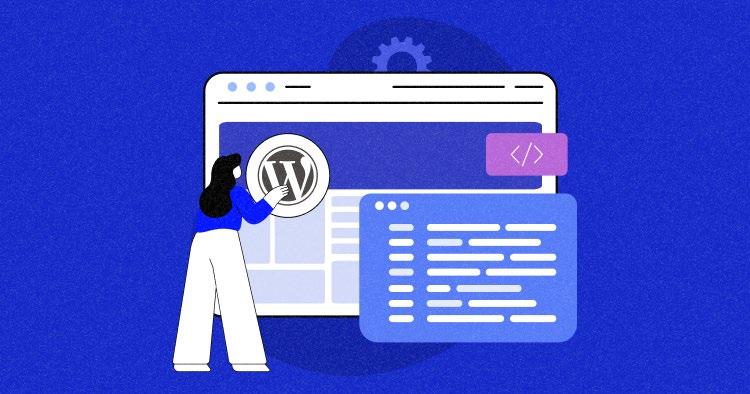
Attention DJ companies looking to create a great website… not all website themes are created equal! So, if you want to create an engaging and successful site for your company, please take note of the following. It should give you some pointers on how to make a great start with your site.
Just so you know… every WordPress site starts with a choice of theme. WordPress just doesn’t work without a theme – that’s the way it’s always been. As such, there’s literally thousands of themes out there that you can choose from.
Indeed, the largest theme marketplace in the world lists over 53,000 WordPress themes (https://themeforest.net), and some themes have been massively successful (the Avada theme has pulled in over $63 million to date). Unfortunately, though, some themes are better than others, so great care must be taken in choosing the theme for your next WordPress site.
Choosing a good WordPress theme for your DJ company is essential for several reasons:
Professional Appearance : A well-designed theme can give your website a polished and professional look, making a positive first impression on your visitors. This is crucial for building trust and credibility. (Side Note: Almost all of you older DJs who refuse to upgrade will fail on this.)
User Experience : Good themes are optimized for usability and user experience. They ensure that your website is easy to navigate, loads quickly, and is responsive on
various devices, providing a smooth experience for your visitors. (Side Note: Again, older sites fail at this.)
Customization Options : High-quality themes often come with a range of customization options, allowing you to tailor your website’s appearance to match your brand or personal preferences. This can include customizable colors, fonts, layouts, and more. (Side Note: The more options, the slower the site’s load speed.)
Security : Reputable theme developers prioritize security and regularly update their themes to address vulnerabilities. Choosing a well-maintained theme can help protect your website from potential security threats (Side Note: You’ll need to use a state-of-the-art security plug-in, no matter what.)
SEO-Friendly : Many good themes are optimized for search engines (SEO), making it easier for your website to rank well in search results. Properly structured code and SEO-friendly features can enhance your website’s visibility. (Side Note: Not completely necessary, as the Yoast or Rankmath plug-ins take care of this.)
Mobile Responsiveness : With the increasing use of mobile devices, a responsive theme is crucial. A good WordPress theme ensures that your website looks and functions correctly on smartphones and tablets, improving the user experience for mobile users. (Side Note: Yes! )
Compatibility : High-quality themes are built to work seamlessly with popular plug-ins and WordPress updates. This ensures that your website remains functional and upto-date as the WordPress ecosystem evolves. (Side Note: Not all themes do a good job of this compatibility requirement.)
Customer Support : Premium themes often come with dedicated customer support, which can be invaluable if you encounter issues or have questions about customizing your website. (Side Note: Not all theme authors deliver on this support – you have to examine their historical comments.)
Performance : Themes optimized for performance load quickly and efficiently. This is not only important for user experience, but also for SEO, as site speed is a ranking factor for search engines. (Side Note: This is a major point, as not all themes are speed-optimized right out of the box.)
Scalability : As your website grows, a good theme should be able to accommodate your needs. It should support additional features, content, and functionality without causing major issues or requiring a complete redesign. (Side Note: As WordPress is based on PHP/MySQL, sites that are going to need scalability need to pay closer attention to the theme they use.)
Updates & Improvements : Developers of reputable themes continue to update and improve their products. These updates may include bug fixes, new features, and compatibility with the latest WordPress version, ensuring the longevity of your website. (Side Note: Themeforest has two aspects that you should pay attention to – the comments and the date of the last update.)
Cost-Effective : While premium themes often come with a price tag, they can be cost-effective in the long run. Their features and support can save you time and money, compared to dealing with the limitations of a free or poorly designed theme. (Side Note: Most good themes are in the $49-to-$79 range as a one-time-fee, with a
smaller amount every six months to renew active support… not really that expensive.)
I’ve used many, many themes since 2004, and have had varied success. A few years ago, I started using TheGem exclusively, as it’s got a really great pre-made blocks system, as well as a lot of demo starting points. However, TheGem (although it’s a great theme) doesn’t come out of the box with great site speed, and you or your developer still needs to run through the list of items that need to be done in order to make a site load faster. Some of my best “tricks” are as follows:
General All-Purpose Optimization Plug-in. (I like to use Perfmatters.)
Cache Plug-in. (LiteSpeed is the most popular, and W3 Total Cache works well also.)
Server-Level Caching. (Do not try this on your own, don’t overthink it and hire someone.)
Increase Cache Expiration Time. (Increase from 24 hours to seven days.)
Fast Theme. (I’ve recently had great luck using GeneratePress – feel free to validate by running my site jordanstjacques.com through Google’s PageSpeed Insights.)
Use SVG Icons. (Avoid popular icon font libraries such as Font Awesome.)
Use WebP Images. (Please tell me you’re not still using JPGs and PNGs!)
Content Delivery Networks. (Again, just hire someone, and tell them to use Cloudflare APO.)
Cloudflare Plug-in. (It’s unofficial, but it works.)
Configure All Width & Height Attributes.
Optimize Your Database Regularly.
Move All Fonts to Your CDN.
CSS/JS Minification. (Perfmatters above handles this.)
Disable Unused Plug-ins on a Per-Page Basis. Host Google Analytics on the Server.
Defer Javascript.
Delay Javascript.
Remove Unused CSS.
Only Load Custom CSS/JS Where It’s Needed. Avoid Redirects.
Avoid Sliders. (Slider Revolution is a major slowdown for your site.)
Serve Videos from a CDN. Delete Recaptcha.
Move Gravatars to a CDN.
Get Rid of Google Maps & Use a Map Image Instead.
Turn Off Scroll To Top.
Disable WP-Cron. (Just hire someone.)
Disable Pingbacks & Trackbacks.
Run the Latest PHP. (Currently safe is v8.2.)
There’s plenty to think about here, of course, so I’ll leave you to it. Most importantly, whether you do your site yourself or whether you hire someone, you should pay more attention to the choice of theme now than you have in the past. Some themes these days have great site-load speed out of the box, which will save you a lot of time later on by avoiding having to go through my optimization list above. A wellwritten theme can solve half your SEO problems right from Day 1 – keep that in mind. Good luck!
Jordan St. Jacques is the President/Lead Digital Marketer at Digitera.Interactive in Ottawa, Ont., Canada. He’s also part of the Author Collective from National Disc Jockeys

Miami, Fla. – Ultra Music Festival drew more than 165,000 fans 'to Bayfront Park in downtown Miami this past March 22-24 for its 24th edition.
Despite a rain-soaked opening day, the eight-stage event pressed on with some of the DJ world’s top acts – Calvin Harris, Tiësto, David Guetta and Martin Garrix. As usual, there were a few surprises, like Illenium joining fellow bass brother Excision on the mainstage and Jon Bon Jovi joining Armin van Buuren’s for a performance of “Keep the Faith.” It all looked like this:




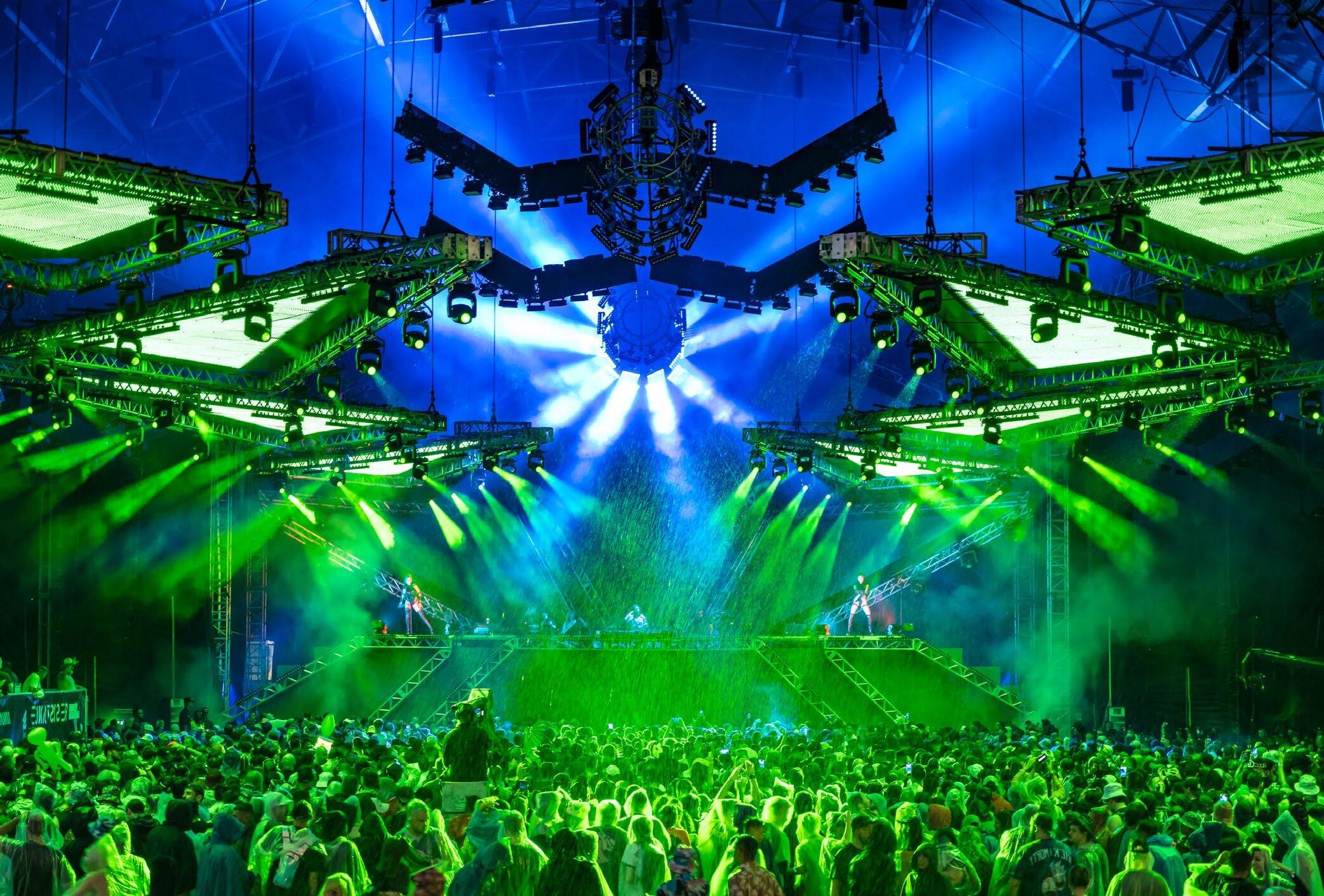










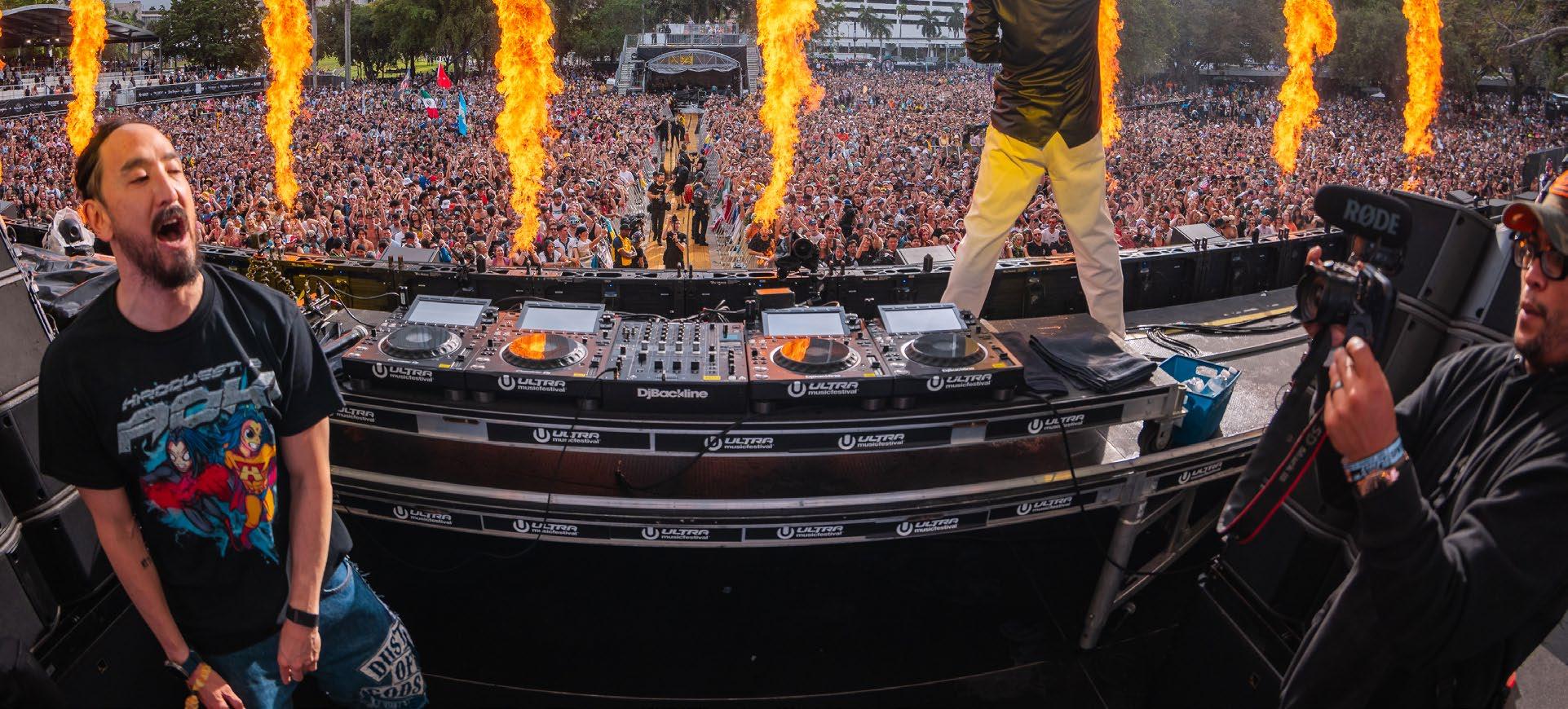
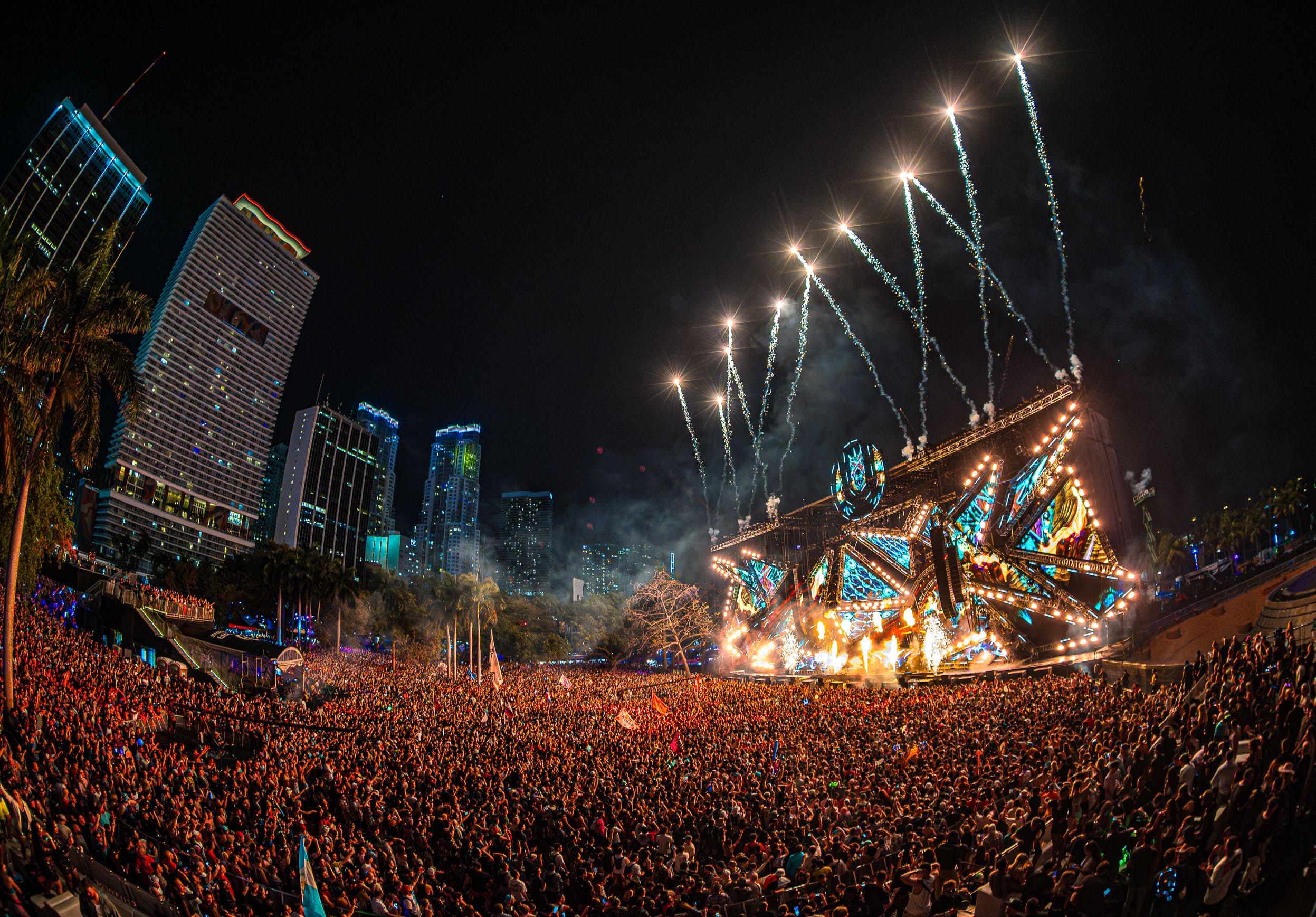



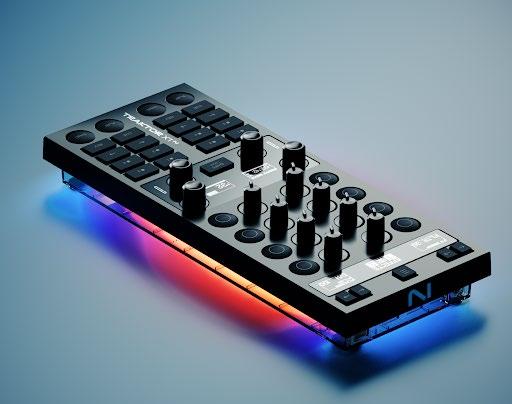
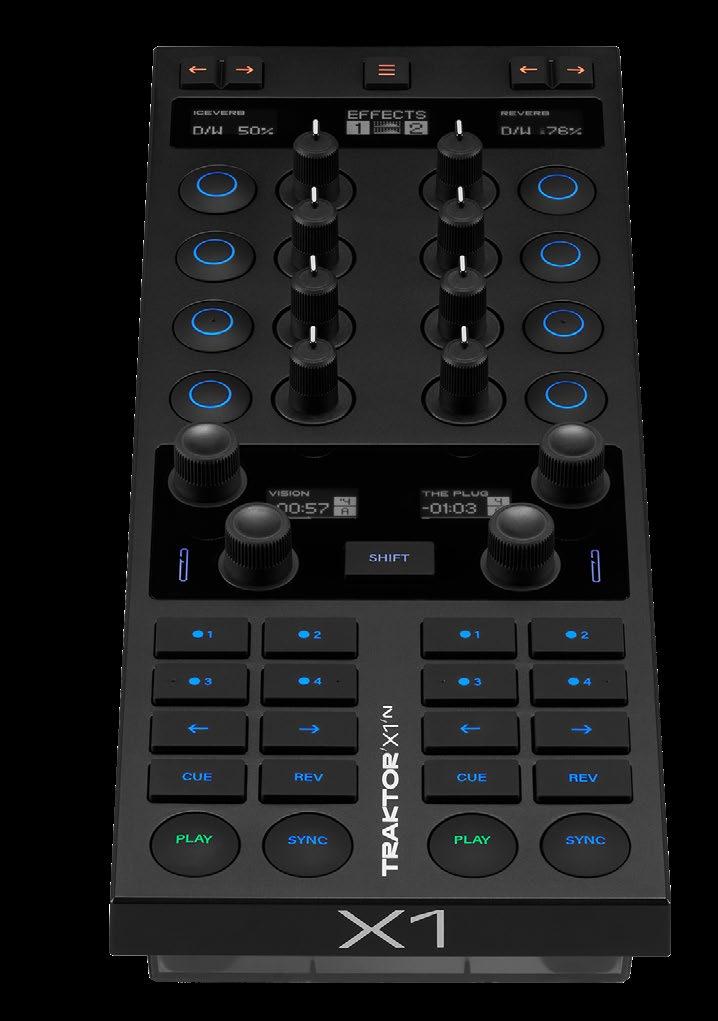
 By Wesley King
By Wesley King
If you’d have asked me just a year or two ago whether Traktor — the long-running DJ sub-brand from Germany’s Native Instruments (NI) — was still even a thing, I would have told you I wasn’t sure. I would have added that I was actively expecting an announcement to arrive at any point that the company had either divested itself of the software and hardware sold under the Traktor name, or that short of that, that NI would simply have chosen to pull the plug and all mention would vanish from its website
I’d also have shared my deep love for Traktor. When I started DJing about two decades ago, I did so with Traktor. It was early days in the digital-DJ space, and my controller, as such, was a MIDI drum controller, the pads, sliders, and knobs of which I mapped within Traktor to do the stuff one needs to do in a DJ set. It worked, and Traktor software was the constant long after I switched to more sophisticated, more purpose-built solutions.
In the years since, and with all due respect to certain other DJ software application that I also know, use, and love, I’ve maintained the belief that Traktor provides the most polished and most intuitive user experience and interface in the market (although that’s more debatable now than at any point in the past). So, imagine my surprise when I received the press announcement that against all imagined odds, Native Instruments was releasing
a new (or at least retooled) Traktor controller; that there was life in the Traktor product team in Berlin after all.
Native Instruments has produced its share of “fits-thestandard-template” DJ controllers in the past, but they’ve also consistently produced their share of controllers that break the mold, and the Traktor X1 is such a controller. The newly released MK3 version of the X1 brings new capabilities to the X1 platform that was launched in 2010, but hasn’t seen a major update in over a decade.
Like its predecessors, the unit is smallish; about 5-inches wide, nearly 13-inches front-to-back, and a bit over 2-inches tall, weighing in at roughly a pound and a half. In other words, it’s compact and portable. It’s USB-powered, but the included AC power supply enables use of the unit’s rear USB ports to connect other devices, acting as a small USB hub that keeps your set-up a bit tidier.
Make no mistake… the X1 is not a standalone controller as such, as it offers no audio I/O as full-size controllers do, nor will you see a crossfader or other sliders, and there is, of course, no room for jog wheels. Its focus is helping DJs navigate the many Traktor features that make for a compelling DJ performance, such looping and effects, while small OLED displays (five of them are arranged on the unit) and color lighting on the controls and the unit itself provide visual feedback, plus direct access to things like track time remaining, BPM, loop sizes, and so forth.
To start, the X1 MK3 allows you to easily browse your music collection and load tracks to a deck in Traktor without resorting to a mouse or trackpad on your laptop. The unit’s four rotary encoders, center shift button, and adjacent OLED displays make it intuitive and display appropriate contextual information. While the capability is effective, I often find myself preferring doing track selection on the computer, as I’m often wanting to sort columns, scroll, or proactively search my vast library. That said, it’s a useful fallback method, especially for DJs who might preplan and organize tracks for a specific set.
Users new to the X1 may find that the transport controls require some getting used to, and without a crossfader or traditional level sliders, the X1 MK3 isn’t going to appeal to every DJ or performance style. I don’t personally find that to be too limiting, in no small part because I don’t use crossfaders, and old-school rotary mixers aren’t a foreign concept either. But with no jog wheels, syncing tracks with the unit means depending on Traktor’s own beat identification logic, and making sure that when tracks are first brought in, the timing is correct, and downbeats are aligned properly — and everything corrected as needed — all ahead of time.
But it’s also here where the X1 MK3 shines; the compact form factor and its design concept seem tailor-made to leverage cue points and looping (more on that in a moment), allowing DJs to shred and remix tracks on-the-fly with abandon.
Mixing mode with the unit maps its eight primary rotary encoders — four on each side — in the logical positions for control of track gain, plus three-band EQ, with the adjacent buttons performing cut operations at the correspond-
ing frequency range.
Effecting the output is another of the X1 MK3’s claims to fame. Setting the unit for this mode, it puts control of over 12 effects in four banks at your fingertips. The rotary encoders in this mode are used for dry/wet control, plus controls for each of the three effects within a bank.
Like many companies in the music space, Native Instruments has brought some subscription-based features to the Traktor platform in the form of the Pattern Player, one of the benefits of a Traktor Pro Plus plan. I’m very much on-the-record as resenting subscription plans in the music space, but I can grudgingly admit that it may well bring some benefits to DJs who opt in, and the X1 MK3 takes advantage of it by providing Pattern Player support. In short, it allows you to bring in outside beats to set a foundation for your mix, while manipulating playing tracks.
So, how does Native Instruments pack all of this into a unit with just 34 buttons and 12 knobs? In a word, carefully — or perhaps, creatively. Two of the buttons are essentially modifiers; one changes the mode, and the other is a shift button. As you might guess, with all the control options and different modes, there’s a lot of overlap with functionalityto-controls mapping, and you’ll doubtlessly find that using an X1 MK3 requires practice in order to understand the modes, how the unlabeled controls are mapped in software, and to ensure that you’re in the right mode before moving a control.
This isn’t a criticism, it’s just a statement of fact that compact controllers with limited physical controls are not entirely unlike learning to use a saxophone. OK, maybe it’s not that bad, but regardless, your fingers are going to get a workout, and you’ll need to take the time to develop some muscle memory. But given the functions of the controller and how it complements other gear, it may mean that you limit its focus to certain areas, versus trying to force it to be and do everything.
Speaking of, how an X1 MK3 might fit into your set-up depends on the gear you have, and how you like to work. Native Instruments’ website provides some suggestions for how you might incorporate the X1, and they vary from using a pair of them with a mixer, to using one with a mixer and a pair of decks, to pairing one with Native’s Z1 to give you the audio interface capabilities that the X1 itself doesn’t offer.
It’s refreshing to see Native Instruments actively investing in the Traktor platform, and new DJ-related hardware from the company is welcome news. The X1 MK3 is a unique, interesting, and powerful controller that will put key Traktor functionality at your fingertips, and provides an array of benefits — even if you do still need a separate audio-interface-capable unit for serious use. With practice, it promises to make your sets more compelling, more interesting, and easier to perform, leveraging Traktor’s powerful ability to not just mix tracks, but to chop them up, remix on-the-fly, and incorporate other material (such as with the Pattern Player). And with a street price of just under $300, and with the included Traktor Pro software license, it packs a lot of capability into a small, portable, and affordable unit.
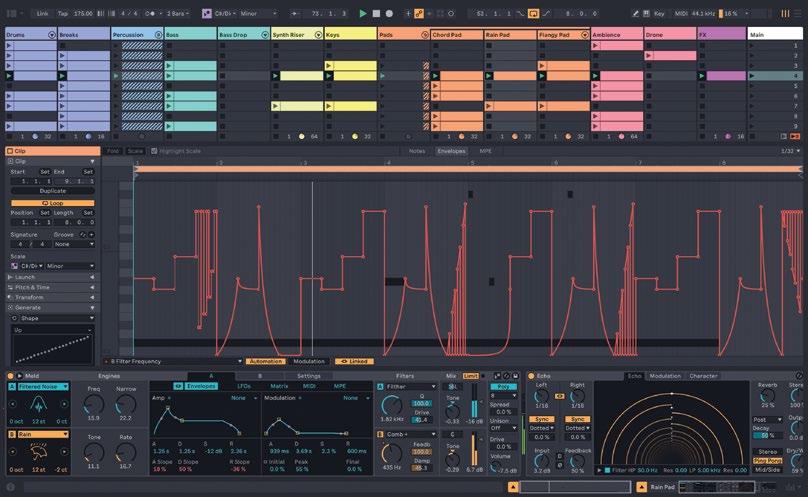

The opportunity doesn’t come around as often as it used to, but when I have the chance to review a new release of the venerable DAW, Ableton Live, it’s always a special time. Rarely does a piece of software occupy a revered place in my heart, but Live is one of them, and while over its history a new version comes out every two years on average, over the past decade or so, the releases have gotten fewer and a bit farther between.
In any case, the reason for my excitement is quite simple; It was exactly two decades ago that I first tried Ableton Live, and it was the first music-creation application that successfully unlocked my ability to take my first steps into music production. Up to that point, the standard timeline-and-mixing-desk design approach of audio and MIDI software had stymied me, proving too difficult to master, after years of unsuccessful attempts.
But when a copy of Live came bundled with a MIDI keyboard I’d bought, I gave it a try. And by way of the software’s innovative session view, with its triggered clips, things finally clicked. (Although these days, for the record, I use the timeline-based arrangement view that was such a roadblock for so long.)
The Berlin-based Ableton occupies a somewhat unique niche in the DAW (digital audio workstation) market. Classically viewed solely as a beatbased production platform, while
market leaders like Avid’s Pro Tools and Apple’s Logic Pro are perceived as genre-spanning, the truth is that Live is, in my view, as suitable as anything else for a broad range of music production tasks. I’ve used it not only for electronica, but also country and soundtrack creation, as well as mundane tasks like voiceover recording and editing. I find it strange that Ableton seems almost reluctant to embrace the software’s broader appeal in its marketing.
In any case, one thing that keeps me coming back to Ableton Live, apart from my familiarity with it, is the licensing model. In an era where so many software companies are trying to figure out how to shift to subscription models, ensuring a steady, reliable, and predictable income stream, Ableton has kept with the old-school model of perpetual licensing. This means you buy the software, and you pay for your upgrades when they’re available — if you choose to do so. I just don’t need (or want) yet another subscription, or the monthly expense in perpetuity just to continue to right to use the software.
It’s been a while since Ableton has rolled out truly groundbreaking modifications to Live, and the Live 12 upgrade doesn’t change that. What it does provide, however, is a
somewhat refreshed user interface, and a range of interesting and genuinely useful new capabilities that justify the upgrade.
One focus area for Ableton with this upgrade is providing more ways to experiment with musical ideas, and MIDI is the subject of many of the improvements. A host of MIDI-transformation capabilities allow you to create results that are more interesting or human, while MIDI-generator tools allow you to spit out new patterns that you can manipulate and incorporate as your songs come to life. And once your MIDI programing is in place, you’ll find it easier and more intuitive to make edits. Max for Live also allows you to tap into and build on these capabilities. And being able to tame and intelligently use keys and scales when working with MIDI is also a real time-saver.
Of all the MIDI changes, however, the new transformation tools are perhaps the most interesting and useful. From strums to arpeggios to time-warping, the tools provide innovative controls to tailor the transformations in ways that I can only describe as exceptionally cool, and that will no doubt be both a timesaver and a source of creative inspiration.
It seems that no DAW upgrade is complete without the creators adding new sound-creation and manipulation possibilities, and Ableton is no exception with Live 12. The company has
added new devices to the product, as well as new “packs,” Ableton’s term for add-in libraries, typically collections of sounds, but which can also take others forms, including Max for Live devices.
New sound tools include Meld, Granulator III, and Roar. The former two are synths, and of these two, I personally find the Meld synth to be the most interesting and capable, at least for my workflows. With MPE support, it offers two oscillators and myriad ways to tailor the sounds it generates. I especially like its capabilities to produce pads, but in truth, it’s so versatile I’ll be spending months just getting to know it. Granulator III also offers some interesting capabilities.
Roar, on the other hand, is a unique new addition that’s described as a saturation effect. As such, it’s designed to help shape the results of samples or synths, and it brings with it the ability to bring anything from gentle coloration of a sound to very dramatic shifts in character. I’ve barely scratched the surface so far in my limited time with Live 12, but it’s destined to become a regular part of my production toolkit.
New packs include Lost and Found, the Performance Pack, Trap Drums, and Golden Era Hip Hop Drums. Lost and Found is a library with a unique collection of sounds; both of the drumrelated packs provide a wide range of beats. Performance Pack is something else entirely; it’s a series of Max for Live devices designed to make it easier to do live performances in conjunction with your Ableton Live projects. None of the four strikes me as groundbreaking, but will doubtlessly provide value for many users.
Finally, Ableton has spent some time improving Live’s user interface and general capabilities within it. The improvements include some broad streamlining and polish that serve to freshen things up a bit. Add in the ability to see devices and the clip editor at the same time certainly makes things easier, while mixer improvements — namely the ability to see the mixer in the arrangement view rather than only session view, along with better usability — are welcome changes.
Also new in Live 12 is a tagging system for built-in sound content. Using the tags makes it much easier to
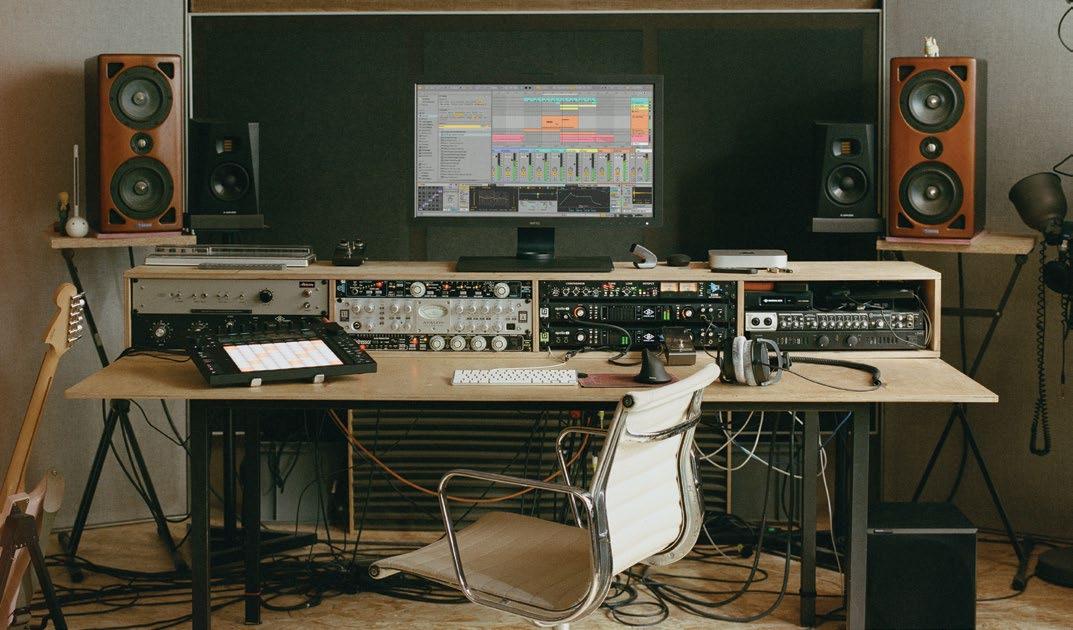
“LIVE IS STILL LIVE, AND IT STILL FEELS COMFORTABLE, JUST REFRESHED, AND MORE CAPABLE.”
filter Live’s massive library for sounds of potential interest. So far, it’s one area the upgrade that sounds great on paper, but hasn’t been as useful in practice as I’d hoped. Live’s new “similarity search,” which promises to locate sounds similar to a specific sample, also shows some promise. For me, I think more experience with these new tools will enable me to get more out of them; I certainly hope so.
Take practically any of the new capabilities in Live 12, and you could easily spend weeks getting to know them and figuring out how best to leverage them in your own projects and workflows. I have to say that Ableton’s done a great job of adding enough value to justify the price of the upgrade.
The good news is that in practically every way, Live is still Live, and it still feels comfortable, just refreshed, and more capable.
As was the case with Live 11, new purchases of Ableton Live 12 range from $99 to $749 depending on edition and capabilities, while upgrade pricing depends on the version of the software you’re currently running, and can be obtained by logging into your Ableton account. It goes without saying, too, that the functionality I’ve described may vary depending on the edition you’re running.
The bottom line is that Ableton has once again rolled out an upgrade that makes Live one of the preeminent DAWs for creation of beatsbased music — and much more.
Charlotte, N.C. – Troy Adams’ company Carolina DJ Professionals operates in three relatively disparate regional markets – bustling Charlotte, picturesque Asheville, N.C., and quaint Charleston, S.C. So, different approaches to different towns, right?
Indeed, Adams, 47, takes a considered and studied approach to each – and since 2008, when began in the Carolinas, he’s managed to successfully navigate these markets. Of course, growing up with parents who were educators certainly helped.
So now, in addition to running his company, he’s managed to spread a little education along the way with “Make Your Business Dance,” his industry education company, on The Knot, and in his participation at top industry trade show DJX. In fact, at DJX this Aug. 8-11 in Atlantic City, N.J., Adams will helm “Frame It: How to Build a Successful Call Framework,” a tutorial aiming to help mobile-DJ attendees raise their sales close rates. Here’s his story:
DJ LIFE: Where did you grow up and what got you interested in music?
Adams: I grew up in Maine, a little town called Houlton. I’ve been interested in music for as long as I can remember. Maybe it was those old Bing Crosby Christmas albums my parents would play on vinyl. Or maybe it was my three favorite 8-track tapes my parents had – John Cougar Mellencamp, The Bee Gees, and The Pointer Sisters. I ended up playing the drums, saxophone and trumpet in high school. When I wasn’t playing sports, I was playing in the band, or singing in church, chorus and show-choir. Anywhere I could be involved with music, there I was.
DJ LIFE: Where did your DJ career begin?
Adams: My first DJ gig was a highschool dance my junior year of high school. My best friend was a wizard with equipment, so he provided
the amp and speakers, which he and his dad built. Meanwhile, I stole some big blinking DJ lights my Dad had that looked more like furniture. And I took the lead on song choices and cueing up all the cassettes with pencils. This was 1993. I splurged and bought my first two CDs from a pawn store later that year. Still remember them: TLCs
Ooooooohhh... On the TLC Tip and Slaughter’s The Wild Life
DJ LIFE: How did DJing progress?

Adams: I headed to Elon University in 1995, joined a frat, and started to DJ all our parties. Then it grew from our parties to sorority formals, college events, bar/clubs, a radio-DJ slot, and, eventually, my first wedding in 1998. I also walked into the campus bars and asked them to give me a shot DJing for a night. I told them they didn’t even have to pay me that first night, but if I did a good job to give me some paying gigs. Before I knew it, I was DJing multiple nights/week at multiple bars. I took that same approach after college as I moved around pursuing a career as a TV broadcaster and golf pro. I never stopped DJing. And that same approach led me to residencies in Atlanta, Key Largo, and multiple places in Maine.
DJ LIFE: When did you start your own company?
Adams: After watching my network of gigs grow, I finally realized that I could make this a legitimate business. So, in 2008, I formed my first company… with an absolutely terrible name: T-Time Entertainment. I had this whole vision of teaching golf to the bridal party on Friday before a rehearsal, then doing the wedding on Saturday. A play on words of tee, tea, and my first initial. I know, bad. The logo was even worse. It was slow at the start. I only made about $8,000 in private events my first year. But I was also working club gigs two, three nights, and I was the GM of a sports-and-social organization. I was out running adult sports leagues several nights a week also and building a good network of people I knew.
DJ LIFE: How many DJs work for you now? How many events do you do?
Adams: In 2011, I switched my company name to the much more professional and Google-friendly name of Carolina DJ Professionals. I hired three DJs initially. Now we have a team of over 20 DJs and 30 total staff, including eight full-time. We do more than 900 events a year, and turn away another 300-plus every year. And we have one of the best training platforms in the country, as well as a dedicated DJ on standby every weekend for any emergencies.
DJ LIFE: What’s your market like now?
Adams: The Charlotte market was my first market, and still my largest. It’s
our home base and where I live. The market was tough when it started, and even tougher now. It’s crazy, but three of the Top-10 most reviewed DJs in the country are actually in the Carolinas. Thankfully, I can now say we’re one of them. Our divisions in Asheville and Charleston are much different than Charlotte, as they are two of the top destination markets in the country. So while Charlotte has this strong foundation of DJs, event pros, and local events, Asheville and Charleston don’t have that same structure of local organizations for DJs and event pros. And it’s a different approach with prospecting events. But the spaces we get to DJ are absolutely incredible.
DJ LIFE: What’s the percentage breakdown of events?
Adams: About 70-percent of our revenue comes from weddings, 25-percent from corporate, and 5-percent from bar/bingo/trivia events. Our goal going forward is to grow the corporate side of our business, focusing on larger events and conferences that require the same amount of preparation as a wedding.
DJ LIFE: What factors have helped make your company successful?
Adams: Relationships, people, preparation, and education. Our “brand” is based off building relationships. It’s who we are, with our clients, but also with our colleagues. By investing time and energy into people and genuinely getting to know them, it’s made us better performers, professionals, and people. My mom was a teacher for 45 years and my dad a coach his whole life. So education and preparation are ingrained in my blood, and I bring that to my company.
DJ LIFE: What is the most common mistake DJ companies make?
Adams: I would say ego and isolation. And here’s what I mean by each. Ego… too many DJs I’ve seen or talked to are focused on themselves. The focus has to be on the client’s needs. Whether it’s a private client or public event, sometimes we as DJs have to put our “wants” aside and pay attention to what our client wants. Isolation… In my early years, I ran into too many DJs who rubbed me the wrong way. Some of that was my fault for jumping to conclusions too fast. And some of that was that
they just weren’t good professionals, maybe not even good people, honestly. But those experiences led me to distrust getting out and connecting with other DJs and event pros. I wish I had did that sooner, because isolation is no good, for so many reasons. Getting out and connecting with other pros helps us grow, inspires us, and also helps us relate to things few others can understand.
DJ LIFE: How does your company market itself?
Adams: About 75-percent of our business comes from some form of referral –be it from fellow event pros, past clients, or word-of-mouth. About 15-percent comes from online marketing and social media, and 10-percent from trade shows. So, we market ourselves consistently with where our business comes from, but also making sure to stay exposed to all potential lead streams.
DJ LIFE: What’s in your DJ set-up?
Adams: I use a Pioneer DJ DDJ-SX3 controller and Virtual DJ software. For my whole team, I provide various Pioneer DJ controllers depending on their skills levels, and those who have their own gear are mostly Pioneer. We only carry Electro-Voice speakers for our main rigs, and across the team we have over 40 pairs of E-V Evolve, EKX-15P, ZLX-15P, and even some old wooden ELX115P speakers. When I do ceremonies or tie in a smaller speaker in other spaces for cocktail hours, I use JBL EON One Compacts. I love the battery life, built-in mixer, Bluetooth,


and portability. I eventually add some E-V Everse speakers to the mix also.
DJ LIFE: Mics? Anything else, audiowise?
Adams: Shure mics across the board. We have over 30 sets of Shure mics, with thousands of events under them, and very few issues. The same goes for the Yamaha MG10XU mixers we’ve been using for years.
DJ LIFE: You’re big on education. You’re a WeddingPro educator for The Knot Worldwide and you’ve been a DJX presenter. Talk a bit about imparting your knowledge.
Adams: For years, I wondered where I’d make my mark on this industry, and I found that with education. Being raised by educators certainly contributed to that. But I’ve also had some great managers, mentors and coaches in my life that have lead me to where I am. And I’m always hungry to learn more and get better. So being able to give back to others, and learn from others also, is why it’s so important to me to be an educator. We all bring a different experience to the table, a different perspective. We all have different personalities, different approaches, different interpretations of things. Sharing that information with each other only makes us better. And when we all get better together, we lift our industry as a whole. And I want my legacy to be that of helping others improve their business… and ultimately their life. I believe I can do that through education.




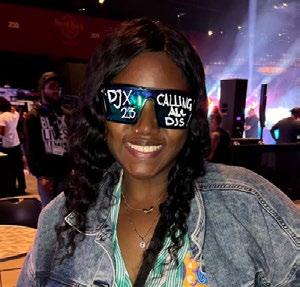




Over the last couple of months, some of my clients have come to me to sort out problems with their email deliverability. Specifically, the DJ-event-management tool that they use – no names, we can save that conversation for another day – were “breaking,” in that the emails that were being sent by the tool in question were not being received by the customers of my clients.
Now, this is a really stressful situation, as most robust DJ organizational tools have automated emails sent out that do all kinds of client and staffing tasks, including but not limited to the following: Sending Contracts Sending Reminders Sending Staff Instructions on Performance
After assisting these clients in dealing with their tool provider to fix the immediate problem, I, of course, dove into the root cause, in order to better understand this issue. It’s a pretty serious change in the email industry, and so I thought it was worth an article all on its own. Essentially…
The major players in the email industry have adjusted their Domain Name System (DNS) requirements in order to further prevent worldwide spam.
Back in the early days of the internet, email authorization wasn’t really a thing, as the only networks being run in the late ’80s were from governments and universities. In the early ’90s, though, the commercialization of the internet began. This, of course, brought
on the aspect of email spam, including spoofing –someone remind me to tell the story of Sanford Wallace at DJX this coming August. Email Service Providers (ESPs) began to implement verification methods, in an effort to clamp down on email bad actors, and over the years the sector has morphed into using three methods. Here they are:
SPF (Sender Policy Framework). This one has been around since 2003, and is the starting point for locking down your email; essentially, it allows the domain name owner to authorize where an email is allowed to be sent from by matching sender domain name against your DNS records to see if the IP address of the server that actually sent the email has been authorized. If that authorization is there, you’re good to go. If not, you either end up in the spam box… or perhaps, your email doesn’t even get delivered!
DKIM (DomainKeys Identified Mail). Launched in 2007, DKIM was the next big framework out there to help clamp down on spam. Again, DKIM is configured through your DNS through two or more private-public keypairs (usually entered as CNAME values) that create a cryptography chain-oftrust. Once entered correctly, your outgoing emails are judged at sending and receiving, which prevents a bad actor from spoofing your email address (known as a “man-in-the-middle at-

tack”).
DMARC (Domain-based Message Authentication, Reporting & Conformance). The third big email standard out there, DMARC came out in 2012. As opposed to SPF and DKIM, DMARC tells ESPs what to do should an email address fail an authentication process. DMARC allows you to publish a policy into your DNS that is recognized by the big email providers that instructs them what to do with bad emails.
Now that you know about the big three standards in email verification, you’re ready for the news as to why these problems that I describe above started affecting most of the DJ world. What it boils down to is this:
For the first time ever, all the big email providers have started to insist that people/ companies who use email beyond normal personal usage have their DNS configured for all three of the frameworks listed above.
Going further, the big email players have also tightened up on Unsubscribes and Complaints, as follows:
Total Unsubscribes from any blast must be below 3-percent (used to be 5-percent).
Total Complaints (i.e., spam reporting) from any blast must be below 0.1-percent (used to be 0.5-percent).
The link to unsubscribe must be an intuitive oneclick process. If it’s one of those cumbersome baitand-switch processes, you’ll
get banned.
So, what to do? Here’s what:
Make sure your DNS entries for SPF-DKIM-DMARC are set properly.
Verify that your SPF-DKIMDMARC is configured correctly for whatever thirdparty tools that you want to have sending email on your behalf. Note: It’s the responsibility of the tool/platform you’re using to give you these instructions. Don’t let them make you feel guilty at all!
Do not ignore the new unsubscribe/complaint limits. It’s very difficult to get off the spam blacklists once you’re on there.
Above all, send good organic emails to people who want your content!
Consider changing your email sender domain to something different from your main website url. For example, if your DJ company website is at midnightmusic.com, think about using something like midnightmusicinfo.com.
I’ve seen bulk-email marketers literally have to change their domain name due to getting in trouble for not paying attention to established email marketing guidelines. Don’t let this happen to you!
Jordan St. Jacques is the President/Lead Digital Marketer at Digitera.Interactive in Ottawa, Ont., Canada. He’s also part of the Author Collective from National Disc Jockeys


AlphaTheta has launched the euphonia professional rotary mixer. The 4-channel unit includes an analog transformer circuit, co-developed with Rupert Neve Designs, which enhances harmonics in the music to create an energetic and polished sound that enables smooth mixing. The unit uses high-quality 32bit A/D and D/A converters as well as 96 kHz/64-bit floating point mixing processing operations in the digital signal processor (DSP). The unit’s 3Band Master Isolator was also custom-designed so users can
Ableton Live 12 is now available, and the update to the popular DAW includes several key features. They include: MIDI Transformations and Generators; Max for Live MIDI Tools; MIDI Editor improvements, like splitting notes and chopping it into several parts. Keys and Scales improvements allow users to transform or generate ideas within a selected scale. Tuning Systems improvements allow users to work outside 12-tone equal temperament. Users can modulate more flexibly and stay in control of a parameter, even after it’s been mapped to a modulation source. Also, users can freeze and flatten a track in a single step.
Ableton Schönhauser Allee 6/7 10119 Berlin Germany (646) 862-7998 www.ableton.com
make dynamic changes to the music and have more sensory control over the sound. DJs can turn their spontaneous musical inspiration into impactful sound by using the 3Band Master Isolator in combination with the new Boost Send feature for powerful performances. The mixer also features an Energy Visualizer, built-in Send FX, and multiple inputs and outputs.
AlphaTheta Corporation 2050 W 190th St #109 Torrance, CA 90504 (424) 488-0480

Eliminator Lighting has released the Bubbletron EXL GO, an easily portable bubble machine featuring a high-capacity internal battery, no cables required. It features two bubble wands paired with two high-power fans that create hundreds of bubbles per minute and propel them up into the air so they travel further and last longer. The unit’s integrated 4 Ah battery allows up to three hours of continuous operation with a six-hour recharge time. It features a 2-liter tank capacity and a 16ml per minute fluid consumption rate, which allows for approxi mately two hours of continuous operation without a refill. A wide front hopper allows for a large quantity of bubbles to exit the machine simultaneously and also facilitates convenient access for refilling.
6122 S. Eastern Ave Los Angeles, CA 90040 (323) 316-9722 www.adj.com



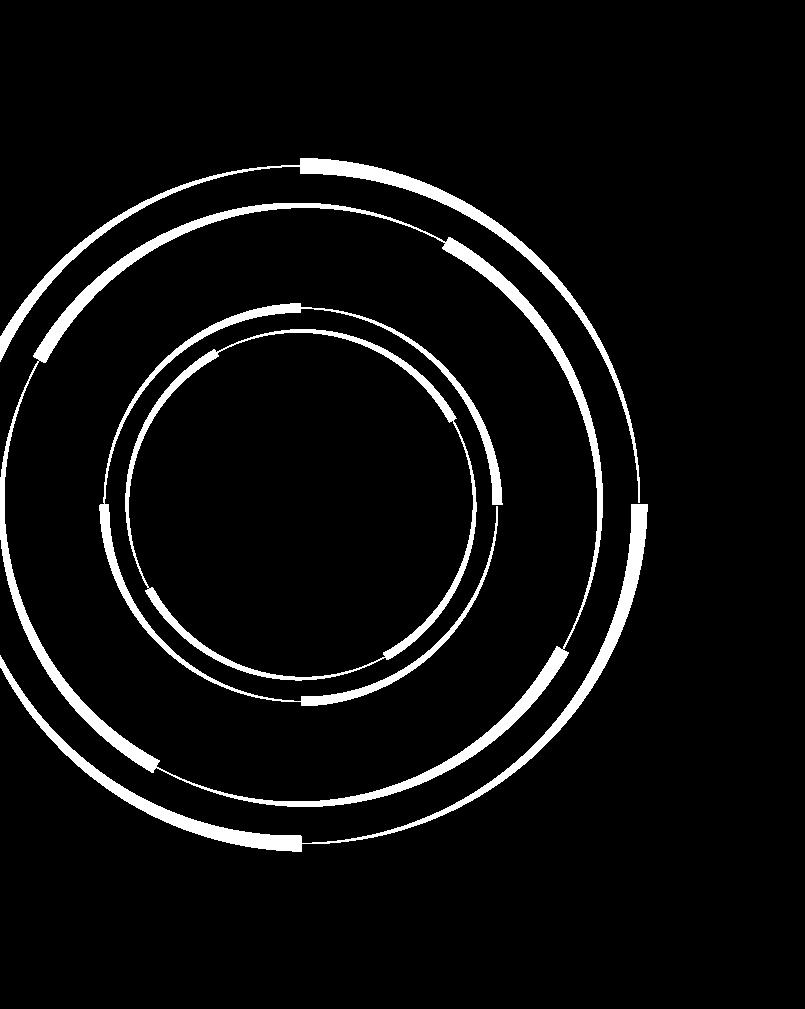






Sensaphonics has released the dB Check Pro in-ear sound level analyzer. Born out of the company’s focus on preserving hearing health in the music industry, the unit provides real-time data on how loud a user is listening to their IEMs or headphones with both earpieces in place. The patented in-line device simultaneously displays average SPL levels at a user’s ears and safe exposure times. It also tracks ambient noise levels with its on-board microphone. The second-generation Pro iteration features a larger touchscreen display to provide more information at a glance, improved readability and streamlined operation, along with enhanced battery life. dB Check Pro is programmed to work with over 140 top professional IEM and headphone models from 12 leading manufacturers.
Sensaphonics 660 N. Milwaukee Ave. Chicago, IL 60642 (312) 432-1714 www.sensaphonics.com
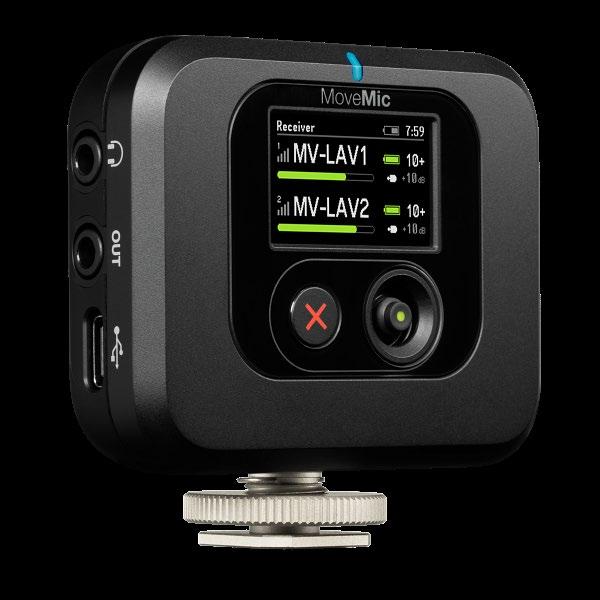
Marking the 20th anniversary of its Xone:92 DJ mixer, Allen & Heath has released the Xone:92 Limited Edition by combining classic styling with modern refinements to deliver the best-ever version of the iconic mixer. With a production run of only 920 units, the Limited Edition’s aesthetics pay homage to the original version with a retro-styled silver top panel. Under the hood, a revised RIAA preamp design, featuring a new curve tailored specifically for electronic music brings new detail to vinyl playback, and the original filter circuits has been honed to improve control while retaining its well-known sonic character. Recessed Filter and XFade switches, plus the addition of a custom innoFADER Pro, further elevate the tactile mixing experience. The rear panel features a specifically designed serial number plate, etched and filled with a unique and sequential serial number. Allen & Heath/American Music And Sound 310 Newberry Rd. Bloomfield, CT 06002 (800) 431-2609 www.allen-heath.com
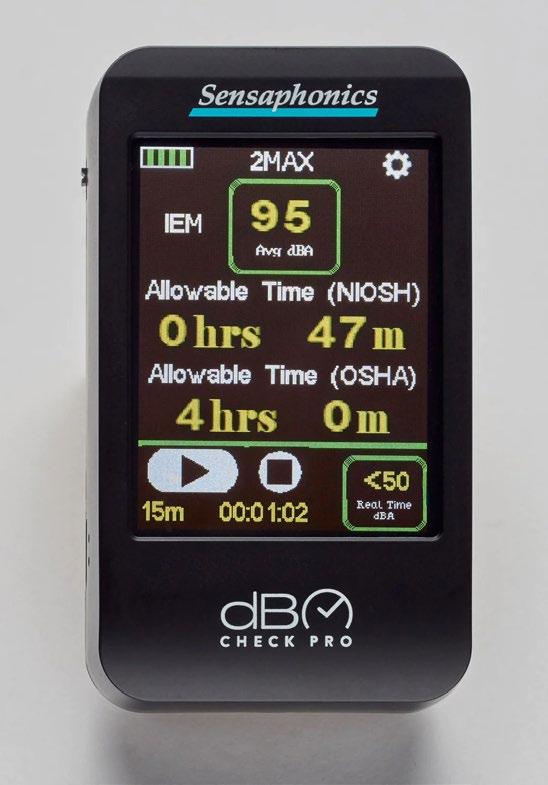
Shure has introduced MoveMic, a dual-channel, direct-to-phone wireless lavalier solution. Engineered for content creators, videographers, and mobile journalists, this compact set-up delivers reliable, broadcast-quality audio. Featuring an ultra-compact design and weighing just 8.2g, MoveMic is powered by a USB-C charging case, which allows for 24 hours of recording. Shure’s discreet and durable MoveMic series connects directly to phones in both singlechannel (MoveMic One) and dual-channel (MoveMic Two) configurations for use with its MOTIV and MOTIV Video apps on iOS and Android. For those seeking universal compatibility, the standalone MoveMic Receiver and bundled MoveMic Two Receiver Kit seamlessly integrate with devices like cameras, computers, and thirdparty smartphone apps.
Shure Inc. 5800 West Touhy Avenue Niles, IL 60714 (847) 600-2000 www.shure.com

Electro-Voice has launched ZXL G2, the second generation of its ZLX portable loudspeaker series. Available in 8-, 12-, and 15-inch, 2-way models in both active and passive versions, the series includes increased output (to 129 dB), frequency range, durability and connectivity, plus new features like remote control/mixing and stereo streaming. The G2 powered versions are “Powered by Dynacord,” onboard premium electronics from E-V’s sibling brand. Ultra-efficient 1,000-watt Class-D power amplifier modules feature an integrated 4-channel, 3-input digital mixer with high-quality effects. Five systemmode settings are available: Music, Live, Speech, Club and FRFR (full range, flat response).
Electro-Voice 12000 Portland Ave Burnsville, MN 55337 (800) 289-0096 www.electrovoice.com
Akai Professional, an inMusic brand, has unveiled MPC Stems, an advanced feature for its MPC desktop software. By seamlessly integrating with the MPC workflow, MPC Stems transforms how producers interact with samples and vinyl records. With MPC Stems, users gain the ability to craft a cappellas, isolate basslines, and extract drum grooves. Powered by the stem-separation engine from zPlane, MPC Stems allows producers to access and manipulate the raw building blocks of any sample with minimal artifacts. The intuitive user interface provides full tactile control over the separation process, enhancing the creative workflow and ensuring that producers can focus on their music.
Akai Professional/inMusic 200 Scenic View Dr. Cumberland, R.I., 02864 (401) 658-3131 www.akaipro.com

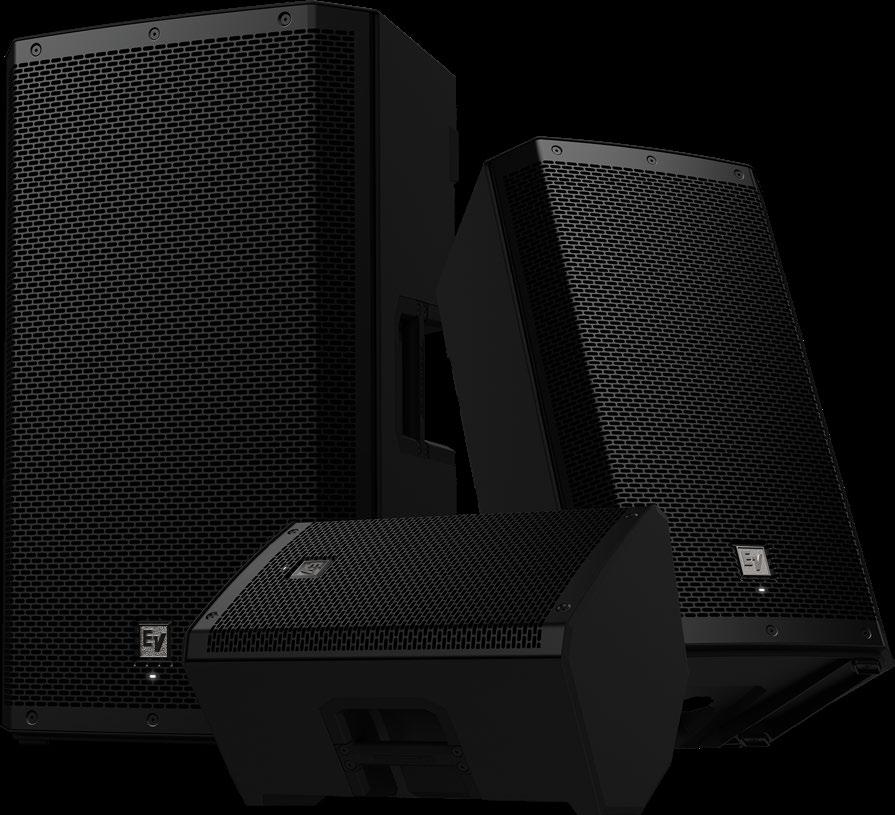

Headliner, a Mixware brand, has introduced the Headliner R4, a 4-channel analog rotary mixer. The unit is crafted with genuine ALPS potentiometers, ensuring precise control over every nuance of sound. The mixer features four Line inputs, three phono inputs, and one mic input spread across four stereo channels. Each channel is equipped with essential features such as gain control with peak LED, a 3-band isolator EQ, headphone cue selector, generous channel volume knob, and a filter activation switch, providing DJs with the tools they need for seamless mixing. Its Master channel is equipped with an analog filter, headphone monitoring, and a comprehensive output control section. Seamlessly toggle between High Pass/Low Pass Filter modes with Frequency and Resonance controls to shape your signature sound. Headliner/Mixware 11070 Fleetwood St., Unit F Sun Valley, CA 91352 (818) 578-4030 www.mixware.net

iZotope, part of Native Instruments, has announced the revival of its distortion plug-in, Trash. First introduced in 2003, Trash’s new incarnation combines the plug-in’s most popular features with modern design. With an easy-to-use interface, the plug-in is driven by two powerful engines: the Trash and Convolve modules. Trash’s namesake module includes over 60 distortion types for everything from subtle saturation to full-on sonic mutation. Convolve comes with over 600 creative impulse responses to morph and filter your sound, from tin cans and piano cabinets, to reversed reverbs and underwater recordings.
Native Instruments North America 6725 Sunset Boulevard, 5th FL Los Angeles, CA 90028 (866) 556-6487 www.native-instruments.com
Audio-Technica has released its ATH-M50xSTS and ATH-M50xSTS-USB StreamSet streaming headsets. Specifically developed to address the needs of live-streaming content creators, the units are based on the ATH-M50x professional monitor headphones and they incorporate technology from the company’s 20 Series microphones, so they deliver full-spectrum, studio-quality for users and listeners on the receiving end. The ATH-M50xSTS uses a 2-meter permanently attached cable with 3.5-mm headphone input (plus 6.3-mm adapter) and XLR microphone output. The ATH-M50xSTS-USB uses a 2-meter permanently attached cable with USB-A connection (and USB-A to USB-C adapter) for plug-and-play connectivity to PCs and Macs. In addition, the ATH-M50xSTS-USB includes an A/D converter with a sampling rate up to 24-bit/96 kHz and sidetone circuitry that lets vocals be heard in the headset (with volume controlled by a dial on the earcup) for a more natural, conversational feel.
Audio-Technica 1221 Commerce Drive Stow, Ohio 44224 (330) 686-2600 www.audio-technica.com


Avante Audio has released the Imperio Pro IMP118 active subwoofer. Suitable for a range of applications, including medium-tolarge venues, parties and events, the system features an 18-inch transducer driven by a 4-inch voice-coil motor assembly. It’s implemented through an efficient bass-reflex system design to deliver linear frequency response from 32Hz - 130 Hz (-10dB) / 38 Hz -130Hz (-3dB) with a maximum SPL of 136 dB (peak). An integrated 3,600watt (peak) Class-D power amplifier provides ample headroom and minimizes distortion, ensuring responsive deep sub bass output. The enclosure is also fitted with an advanced DSP system that allows configuration for a variety of applications and speaker arrangements. Access to the DSP settings is provided via a large backlit LCD display on the rear panel. An intuitive menu interface allows quick and easy setup, which is navigated using a single push-toselect rotary control.
Avante Audio 6122 S. Eastern Ave Los Angeles, CA 90040 (323) 316-9722 www.avanteaudio.com
HEALING AND OPPORTUNITY THROUGH MUSIC ONE PERSON AT A TIME

YOUTH MUSIC PRODUCTION AND DJ PROGRAM ON A NEW TRACK REENTRY MENTORING PROGRAM PRISON ELECTRONIC MUSIC PROGRAM
Give a Beat’s mission is to use the power of music as a pathway to healing and opportunity for those impacted by the criminal justice system.
Be a champion for the transformative power of music while promoting social justicebecome a Give a Beat member today!
The I Give a Beat Patreon Membership offers an opportunity to support our mission to use the power of music as a pathway to healing and opportunity for those impacted by the criminal justice system while also receiving valuable perks.
Benefits include discounts and subscriptions to Ableton, Beatport LINK, IO Music Academy, OM Records, ROSTR, great swag and more!

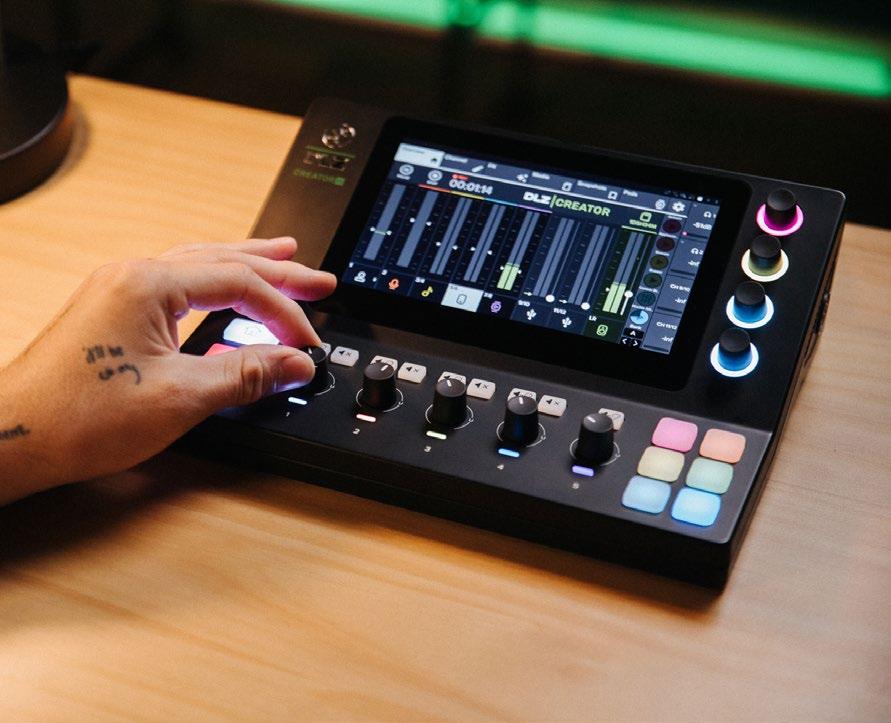

AlphaTheta has introduced the OMNIS-DUO, an all-in-one DJ system with Bluetooth audio output. Built to be totally portable and without cable connections, the battery-powered OMNIS-DUO is lightweight and compact enough to fit in a good-sized backpack and it includes two decks, plus mixer interface and touchscreen. All the unit’s effects can be applied to the Bluetooth audio and there’s a choice of other input options. Users can plug USB Type-A drives and SD cards into the unit, as well as a PC/Mac via USB Type-C terminal to use rekordbox Performance mode. The Wi-Fi function allows easy access to tracks on laptop, smartphone or the cloud without wired connection.
AlphaTheta Corporation 2050 W 190th St #109 Torrance, CA 90504 (424) 488-0480 www.alphatheta.com
Mackie has released the DLZ Creator XS, a slimmed-down version of the DLZ Creator all-in-one content creation studio. Designed for podcasters and streamers who need fewer inputs and outputs, DLZ Creator XS delivers the same broadcast-quality results as the larger DLZ Creator. The new system features two Onyx80 mic preamps with up to 80 dB of gain and two headphone outputs, while the original DLZ Creator has four of each. This design makes DLZ Creator XS the perfect solution for a solo podcaster with a guest, a two-host YouTube show or any app where four mics and headphones are unnecessary. With a 7-inch touchscreen and compact knobs instead of faders, DLZ Creator XS also takes up less desk space. Mix Agent software works like a built-in audio-engineering assistant, guiding users through each step of the setup process, from setting input gain to configuring headphone outputs. Mackie 16220 Wood-Red Road NE Woodinville, WA 98072 (425) 892-6500 www.mackie.com
Germany’s Reloop, distributed Stateside by American Music & Sound, has released the Mixtour Pro controller for algoriddim’s djay Pro software. The 4-deck unit, designed in collaboration with multi-genre dance-music star Laidback Luke, is imbued with a slew of performance and compatibility features. The unit boasts a slew of RGB-backlit real-time indicators to manage effects and performance features, in addition to clearly indicating which deck is in use. Its sleek, ergonomically arranged interface pairs the first and third decks to the left-side controls, with the second and fourth decks on the right side, allowing you to deploy a dedicated 3-band EQ, Gain attenuator, bi-polar low- and highpass filter, and transport controls for each side. Its eight distinctive performance modes can be configured to use all eight backlit pads with one deck or split to use four with each deck. Reloop/American Music And Sound 310 Newberry Rd. Bloomfield, CT 06002 (800) 431-2609 www.reloop.com

“BREATHE” (NATASHA DIGGS REMIX)
Blaze
Slip N Slide
Slip N Slide paved the way for some quality house in the 1990s and some of those tracks are now being revisited. This classic from Blaze gets a 2024 makeover from NYC vinyl aficionado Natahsa Diggs, who doesn’t stray very far from the original soul roots of the track and provides a welcome update.
– Curtis Zack
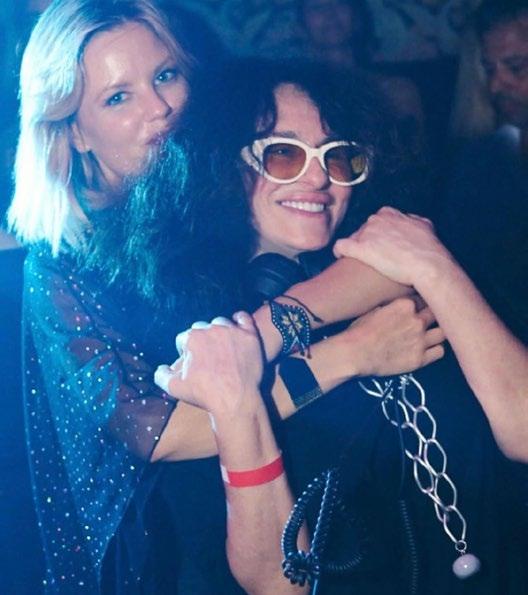
“I HAVEN’T FELT THIS WAY”
Nicole Moudaber & Ida Engberg MOOD
This trippy burner from the two techno titans pulses, pops, and rises until it hits critical mass. Both nervy and monstrous, this collab should please genre fans and fuel plenty of late-night action.
– Jim Tremayne“MY LOVIN’”
Dr Packer & Elektrik Disco Fool’s Paradise
A heavyweight Australian combination line-up for the next Fool’s Paradise release. Covering the Evelyn “Champaign” King track, this is everything you would expect – housey, discoey, and first-rate production across all the mixes. Bumpin’ and fun.
– Curtis Zack
SPACE COWBOY” (MICHAEL GRAY GOOD VIBE ZONE REMIXES) Jamiroquai
One of the all-time classic house tunes in the guise of its David Morales mix, “Space Cowboy” gets the Michael Gray goodvibe treatment here and a fresh lease of life. Whether it is the vocal version or dub that take your preference, this will undoubtedly do very well.
– Curtis Zack
“YOU MAKE ME STRONGER”
The Checkup & DJ Merci feat. Mona Lee Kaoz Theory
Berlin producer The Checkup teams up with DJ Merci and Mona Lee for a sublime slab of soulful house music. The original is a soulful gem, while on the remix Simon Shaw heads down a garage-style route with a killer bassline and skippy drums.
– Curtis Zack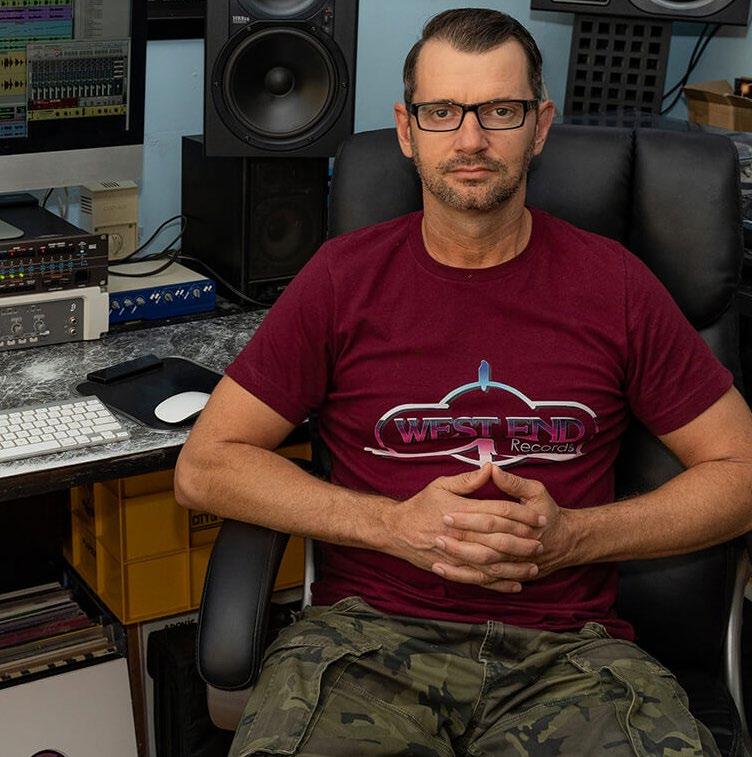
“I’M CAUGHT UP (IN A ONE NIGHT LOVE AFFAIR)”
Jocelyn Brown
Quantize
First released under the Inner Life banner and released in 1978, this bumpin’ track features original producer John Morales revisiting his work five decades later with the legendary vocalist. For those spinning Nu-Disco, here’s the real thing with a fresh set of mixes on this timeless anthem.
– Curtis Zack

“CAROUSEL”
Wankelmut feat. PLANT
Robbins Entertainment
Somewhat familiar EDM fare here, but with hooks that really stand out and don’t let go. Try to avoid humming this earworm after you’ve heard it.
– Jim Tremayne

“SKATE DANCER”
J Nitti feat. Vanessa Jackson
Irma
Originally released by Vinzerrelli and given a couple of revisions by Dave Lee, “Skate Dancer” now gets an altogether housier retake on Italy’s venerable Irma label. This only uses the hook and backs it with a driving bassline and uplifting chords. Tasty.
– Curtis Zack
“FUNKY & YOU KNOW IT” (MYD REMIX)
Shakedown & Bootsy Collins
Glitterbox
Originally released late last year, “Funky & You Know It” just got a whole lot funkier thanks to this remix from French talent, Myd. With a vibe reminiscent of peak Basement Jaxx and paired with the legend that is Bootsy Collins, this is an essential floor mover.
– Curtis Zack
Bootsy Collins


“One Chance”
Chemars
ArtFunk
I’m a massive fan of the soul versions of this track by Walter Jackson and Rena Scott, so this house-sampling take by Chemars is always going to do the business for me. Simple stuff, but you can’t really go wrong with the source material.
– Curtis Zack



■ Ritmo Internacional Record pool
■ DJ Latinos Record Pool
■ MassPool
■ Record Pool Latino
■ Latin Beat Chicago Record Pool
■ All In Music Pool
■ Gary Canavo masspooldjs Saugus,MA
■ DJ Sticky Boots The HyperMiXx Syndicated
■ Dan Mathews Rhythm 105.9FM + Syndicated
■ Manny Esparza Nexus Radio Chicago,IL
■ Howard HK Kessler In The Mix With HK Syndicated
■ Randy Schlager KNHC 89.5FM Seattle, WA
■ DJ Ilan Fong Multiple Pod Casts Columbus, OH
■ Chris Egner Victors Milwaukee, WI
■ Alan Chasen OMAP Washington, D.C.
■ Steve Tsepelis Pacific Coast Long Beach, CA
■ Brian Stephens Mixxmasters Lithonia,GA
■ Peter K. Productions Peter K Syndicated
■ Michael Cerchiai House Of Pride Radio San Francisco, CA
■ DJ Spawn Mix 93 FM Los Angeles, CA
